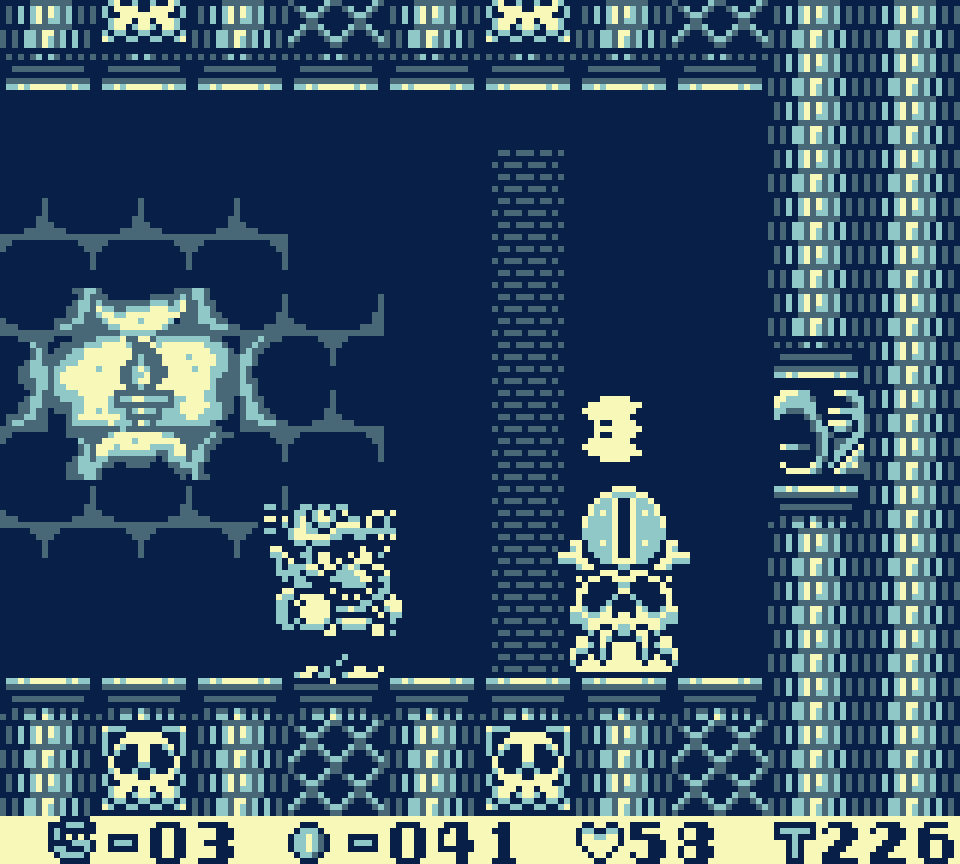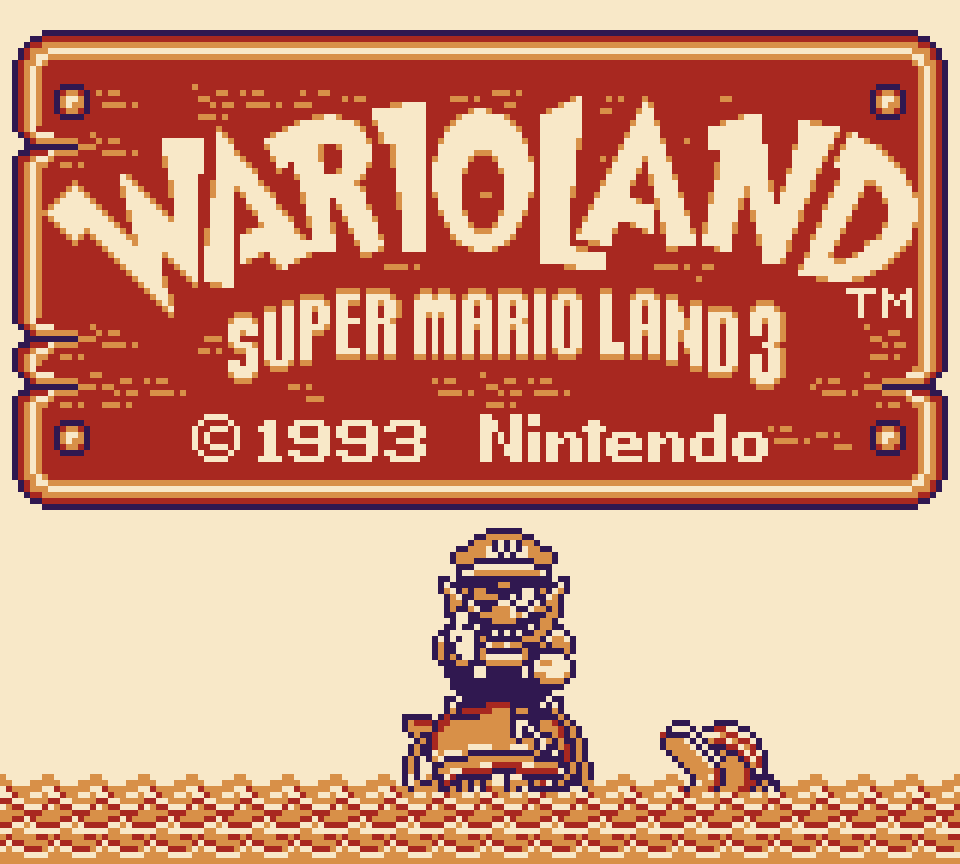The 1st Wario Land might be the Mario game that has been worst affected by age. You can see it kind o’ attempt very forward-thinking elements for 1993, including its focus on collecting coins with actual rewards for doing so beyond a high score & extra lives & the focus on finding hidden treasure in levels, making this arguably the 1st collectathon platformer, &, as part o’ that, its alternate endings.
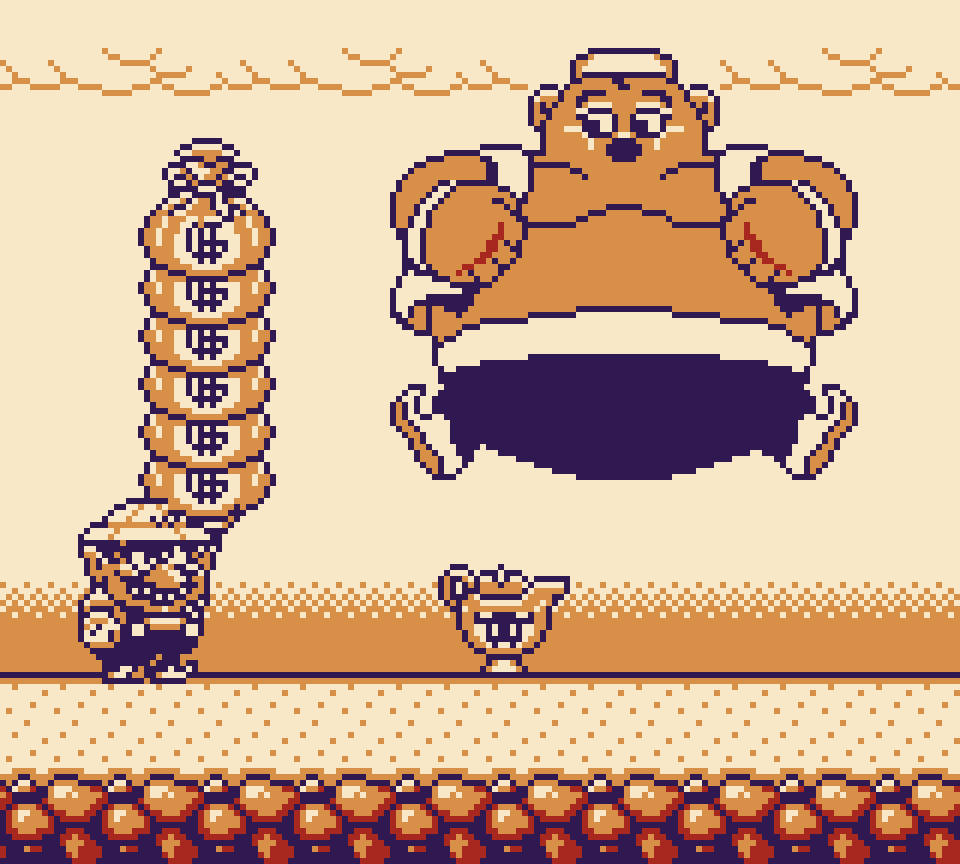
But I say “kind o’ attempt”, ’cause Wario Land doesn’t do much with this collectathon aspect beyond different endings, & I would say it didn’t implement them well. Treasures basically just act as alternate exits like in Super Mario World, including requiring carrying a key to a keyhole, which is on top o’ this game having alternate exits, too, including a whole bonus world that doesn’t offer any tangible reward for completion — contrast to Super Mario World’s fun reward for beating Special World. & as we’ll see, Wario Land’s treasure & alternate exit puzzles are not nearly as clever as Super Mario World’s.
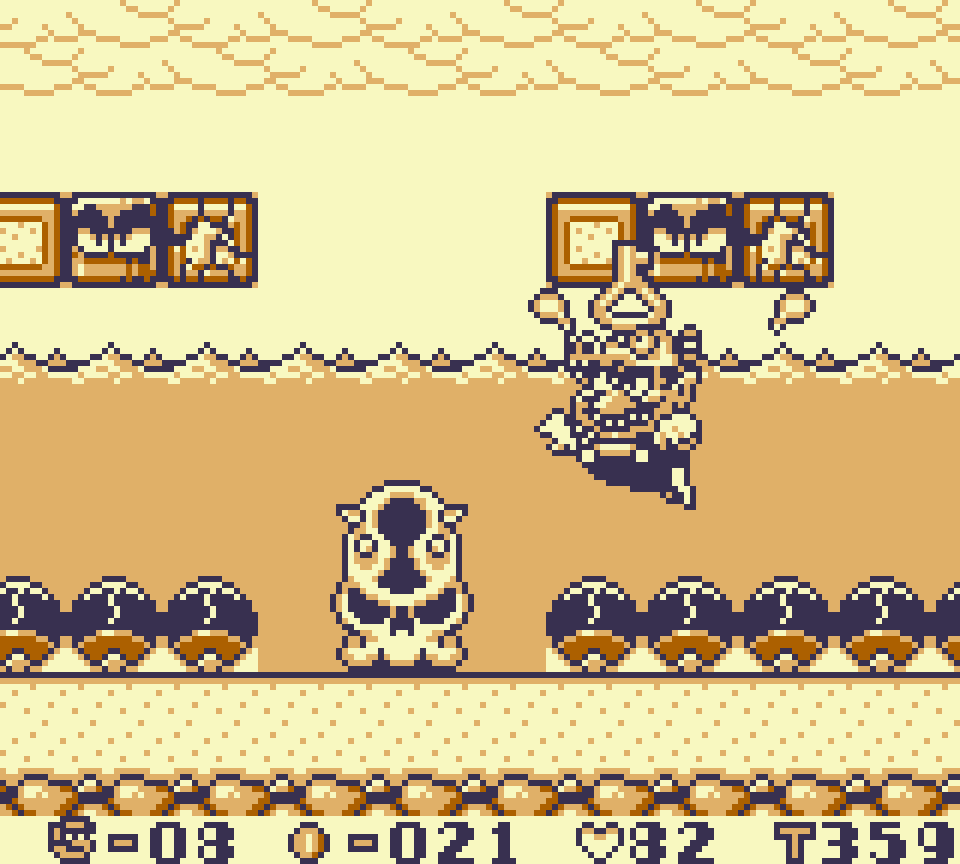
Worse, collecting coins is severely hampered by the fact that you lose all the coins you collect in a level if you die — levels don’t e’en save how many coins you had when you trigger a midway point. For a contrast, e’en Super Mario Bros. kept how many coins you collected when you die. The result is that unless you’re a seasoned player who can play e’ery level flawlessly, it’s much mo’ efficient to just zoom thru levels & grind for coins from the early, easy levels, specially since the early levels tend to have mo’ money, anyway. This makes the portions o’ levels that exist purely for giving you coins feel like a pointless waste. Added to this is how tedious combat is in this game: for some reason, most enemies take 2 hits to defeat & only give 1 coin when defeated. It’s usually better to just ground pound them or e’en just jump o’er them & ignore their paltry coin.
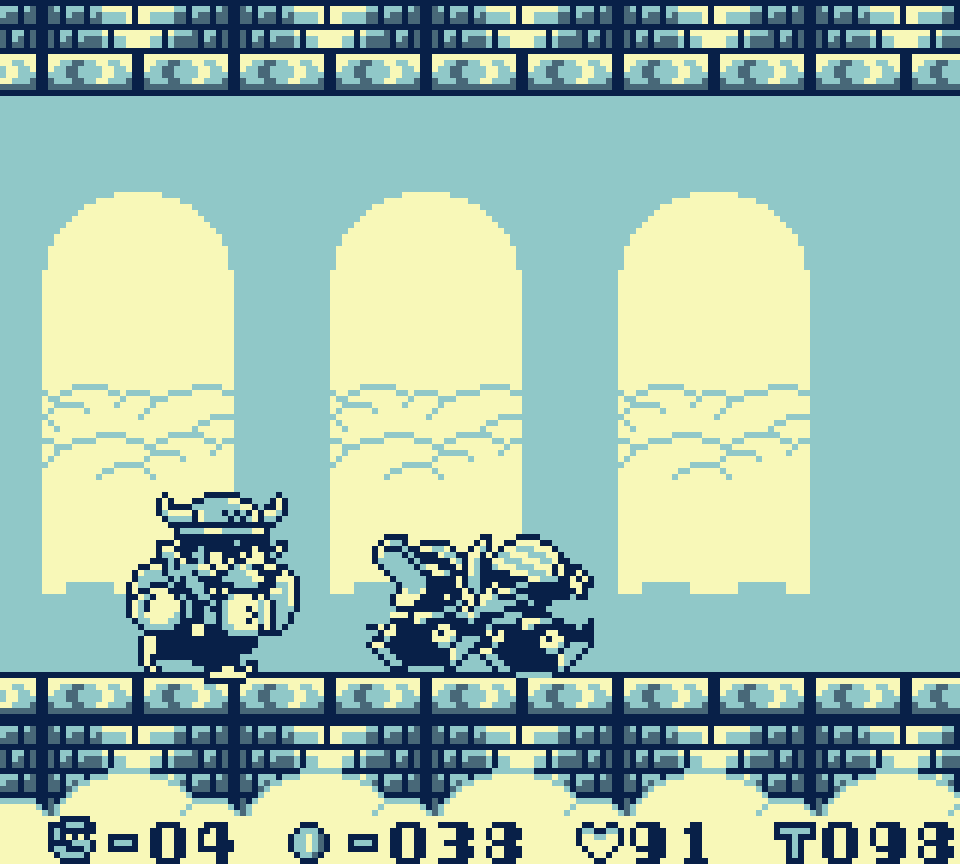
Unfortunately, the basic platforming aspects aren’t much better, & certainly aren’t to the standard o’ e’en the Super Mario Land games, much less Super Mario Bros. or Super Mario World. This game will stretch its scant mechanics & gimmicks for many repetitive levels & will repeat basic setpieces several times. I hope you like slow boomerang-throwing ducks & diving birds, as they’re all o’er this game. It’s baffling that a game that you’d think is s’posed to be a subversion o’ classic Mario games relies so heavily on basic mechanics that were already clichés, like jumping fireballs & moving platforms, as if this game came out just after Super Mario Bros. in the 80s. Probably the most damning criticism you could make gainst this game is that Super Mario Land 2: 6 Golden Coins a year before this game did mo’ to subvert Mario games, & that was a game where you played as Mario gainst Wario.
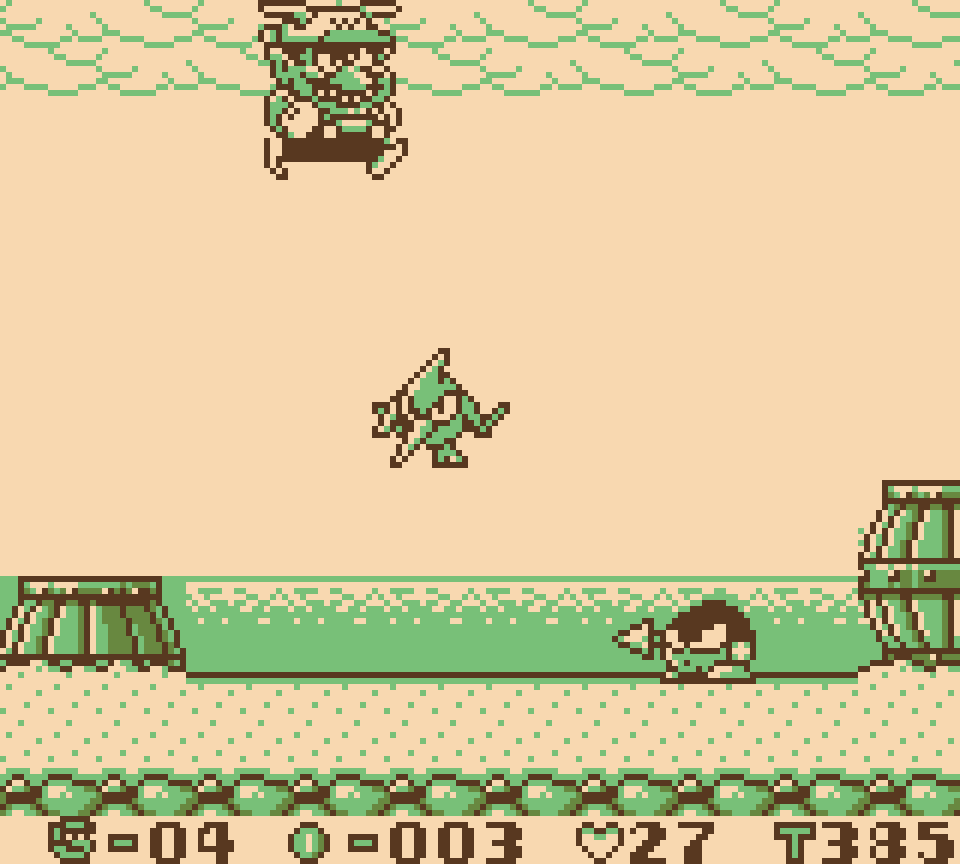
The least defensible aspect o’ Wario Land is its abysmal controls, physics, & hit detection. Considering the many platformers that came out before this going back to 1985’s Super Mario Bros., it’s baffling that Nintendo would release a game nearly a decade later that completely missed all o’ the things that made that game feel good. The best way to describe it is that this game feels like a bootleg, which, to be fair, is fitting for Wario, a character who is basically a bootleg Mario & would later publish games like “Super Wario Bros.” when he runs his own video game company in WarioWare, inc. Mega Microgame$!. But such a game is much mo’ tolerable when in just 1 8-second bout, not as a full-length game. Wario feels very floaty & is unbearably slow. His jumps are very slow & you have to hold the jump button a long time to get the full jump, as if this game took place on the moon Wario wins in the golden ending, unlike most platformers where the interval ’tween small & large jumps are much smaller, making it much easier to accidentally make too-small jumps & not ’cross gaps. Meanwhile, climbing physics are just completely buggy: moving sideways while on a ladder you’re clearly touching will sometimes cause Wario to inexplicably fall off into lava. The difference ’tween this game’s climbing physics & that o’, say, Super Mario World, which came out 2 years prior, is like winter & summer. Landing clearly on top o’ enemies will sometimes get you hurt or, e’en mo’ bafflingly, have you pick them up & eat your jump. E’en bottomless pits weren’t programmed correctly: rather than kill you when you got below the bottom o’ the screen, merely touching the bottom causes Wario to die as if he touched hidden lava. It’s li’l things like these that you ne’er see in Mario games, but will see in sloppily-programmed bootlegs that don’t quite get the details right.
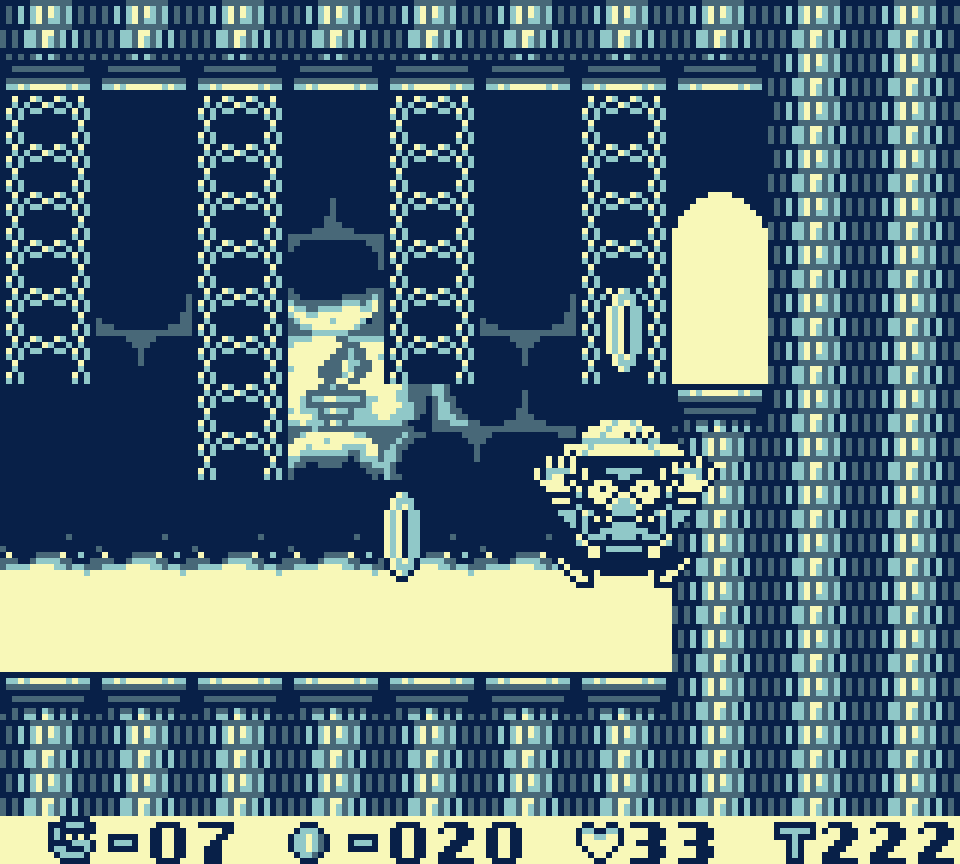
Probably the only gameplay part o’ Wario Land worth praising are the powerups, which, while not as good as what Super Mario Bros. 3 had, & have some wonkiness, are pretty fun. The dragon powerup can burn thru just ’bout e’erything, including bosses, tho having to wait for its start up & wind down is annoying & boring, specially since its flames stop affecting things long before its animation ends; & the jet powerup is right up there with the tanooki suit & cape feather, allowing you to quickly glide thru levels without making it nearly as easy to cheese thru levels as Super Mario World’s cape feather.
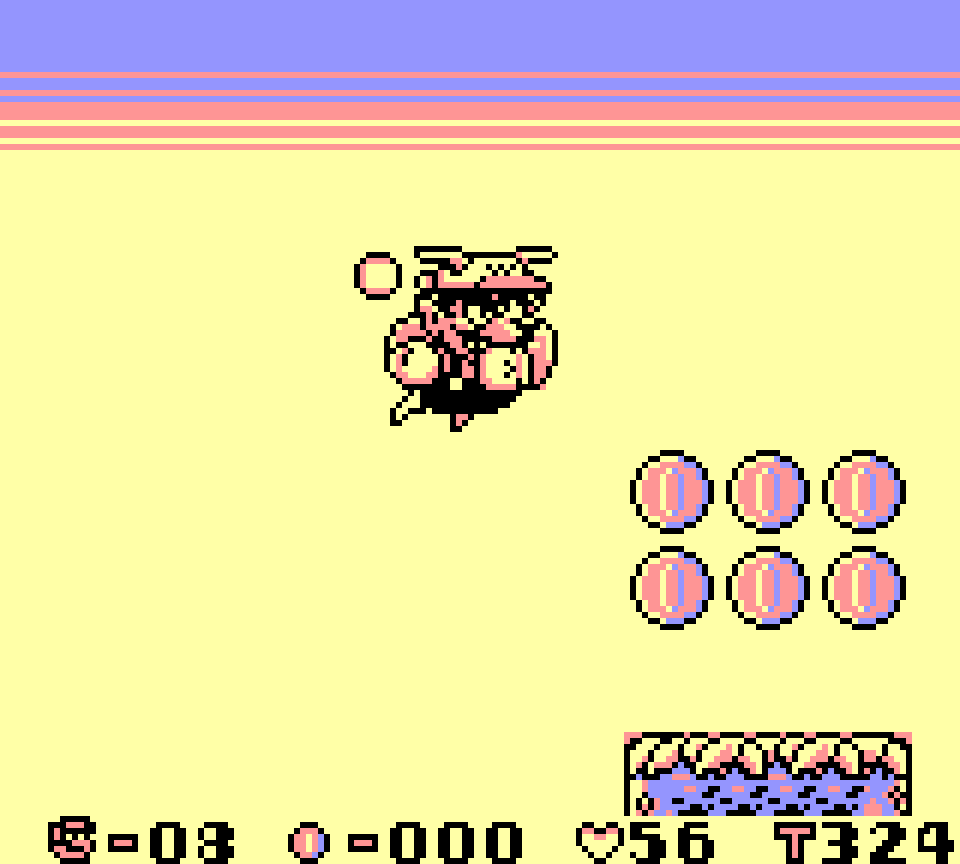
& something that hasn’t aged poorly in this game @ all are its music &, specially, its graphics, which arguably look better than Wario Land II & Wario Land 3’s several years later & looks much better than Super Mario World & Super Mario All-Stars on superior hardware. It’s surprising how detailed the backgrounds in this game can look, specially compared to the stock backgrounds Super Mario World & Super Mario All-stars had. E’en when Wario Land’s backgrounds are simple they do mo’ to add to the feeling o’ the environments than Super Mario World: contrast the amorphous cave blobs with their amateur gradient shading used in lava level Vanilla Dome 3, making Vanilla Dome 3 just feel like a cave level that has some lava in it, & the wavy dithering @ the top o’ Wario Land’s “Stove Canyon” levels, which make you feel the heat o’ these levels. ( Admittedly, I cheat a bit by giving the Wario Land screenshot a fitting palette, rather than the average grayscale or pea green; but any palette would be better than the gaudy teal-&-red colors that they gave Vanilla Dome 3 ).
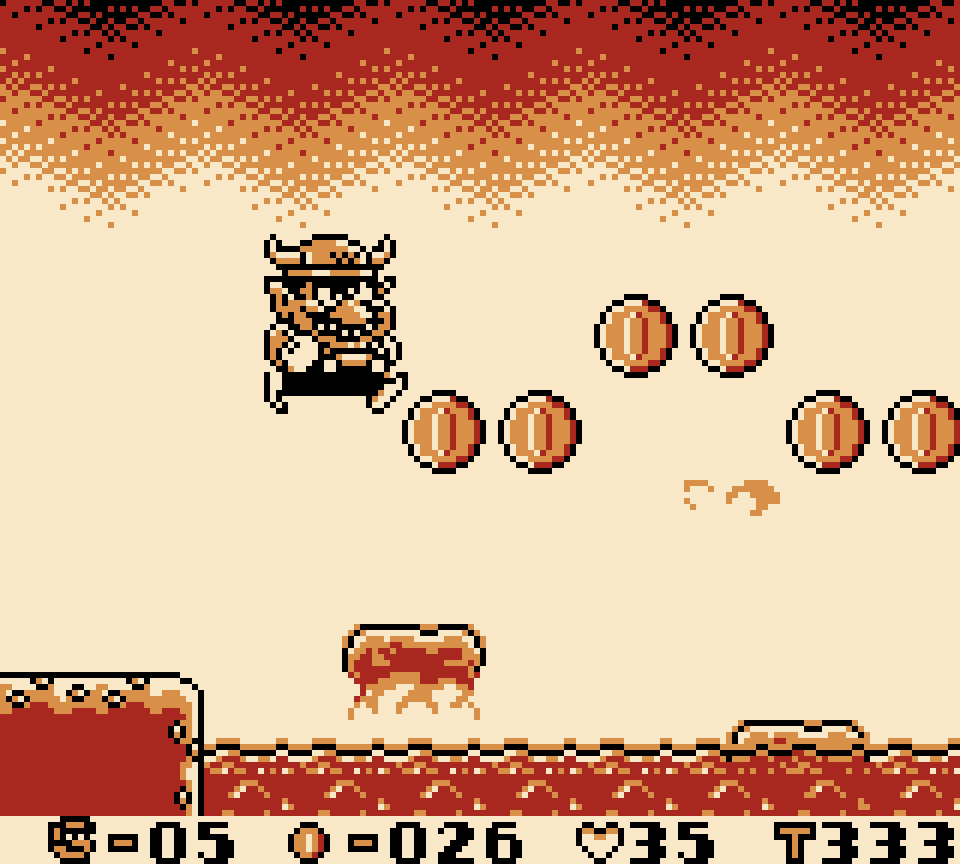
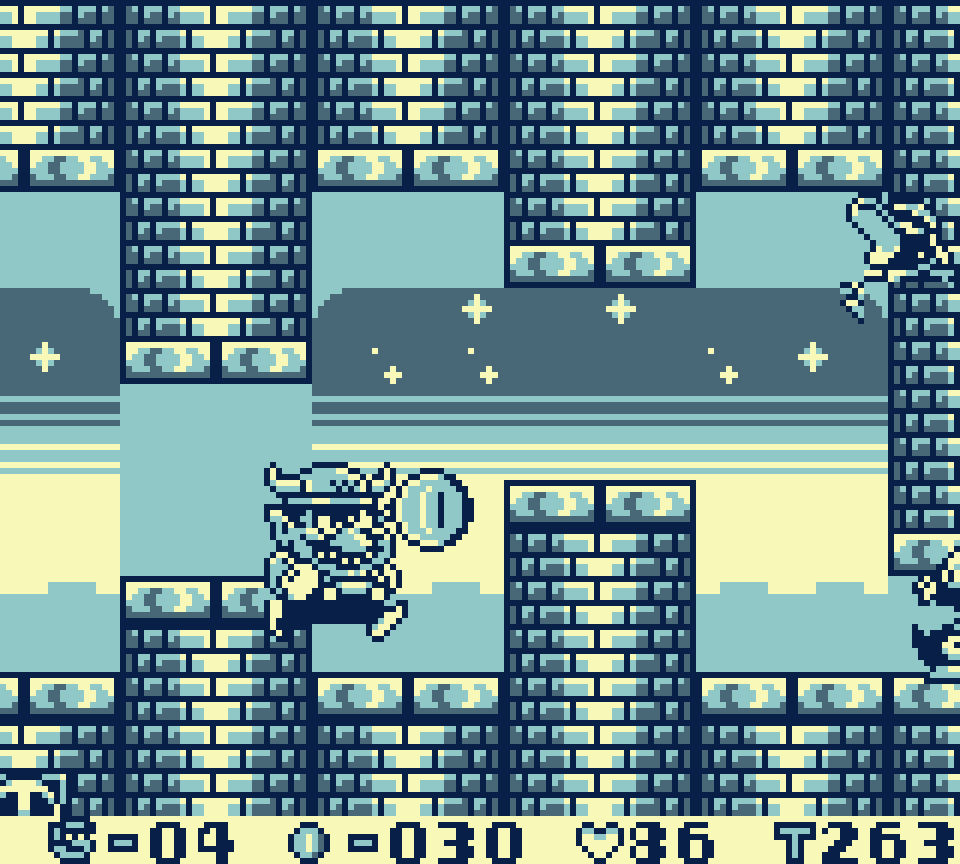
& Wario’s goofy grins thruout this game — specially during the bonus coin game after e’ery level — are much better than the mo’ stoic expression Wario wears in its 2 Game Boy & Game Boy Color successors.
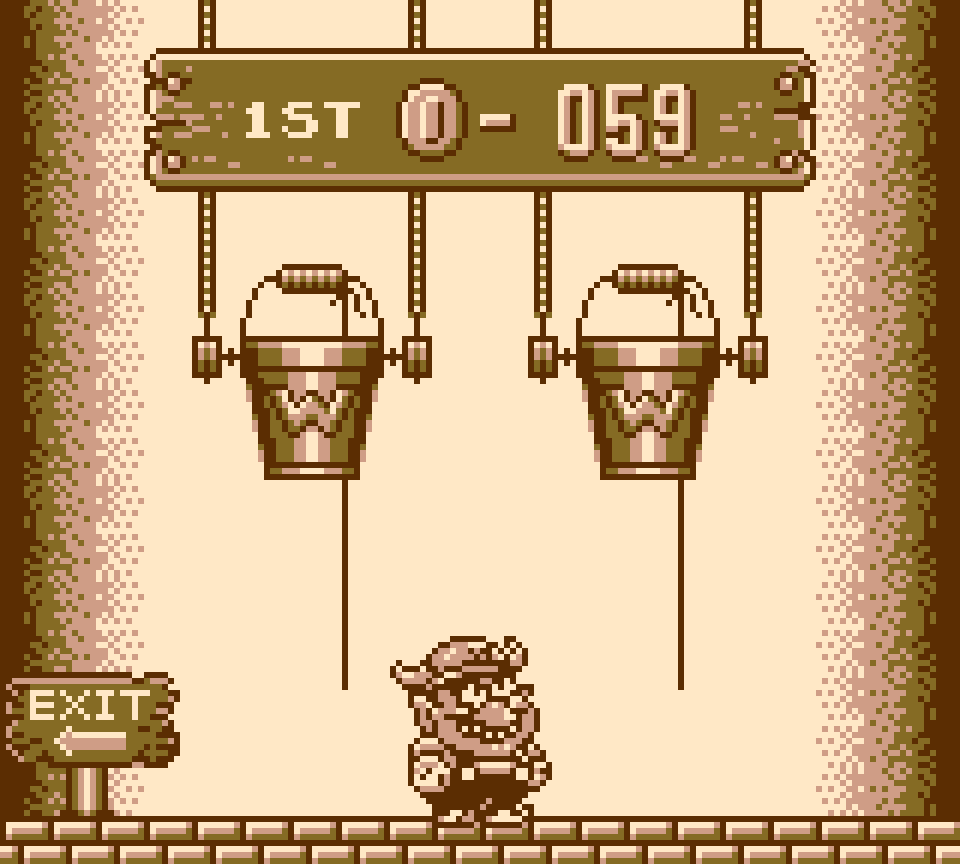
All o’ this is to say that Wario Land doesn’t work well as either an exploration-based collectathon puzzle game, nor as a fast-paced action platformer. Wario Land games would ne’er achieve controls or physics as good as Mario or Donkey Kong Country games, but later entries years later would get them much closer to parity so that the difference is much less jarring; &, mo’ importantly, later games would become much mo’ creative & lean much mo’ into the slow-paced puzzle aspects that made the less-than-perfect physics & controls less o’ a problem. Still, it’ll be good to become acquainted with the level design this game has, as naïve as it is, to better appreciate what later games will deliver.
40. Course No. 22
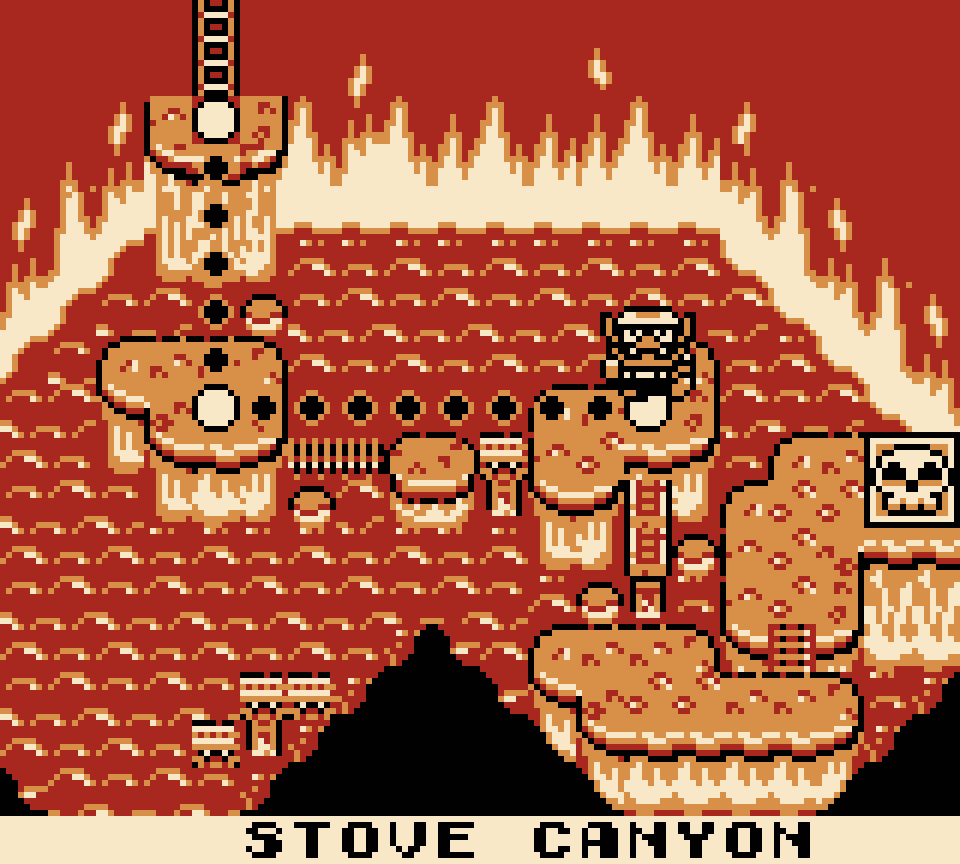
I have trouble believing anyone but the programmers themselves who were already familiar with the climbing mechanics’ mysterious inner workings playtested the horizontal climbing sections in this level: e’en when you are clearly covering almost the entirety o’ the 1 block o’ fence going rightward, if you try to go rightward you will oft fall into the lava & die. I’m still trying to figure out what the hitboxes on these things are, but they’re certainly not what any rational programmer would make them — or what a game like Super Mario World would make them.
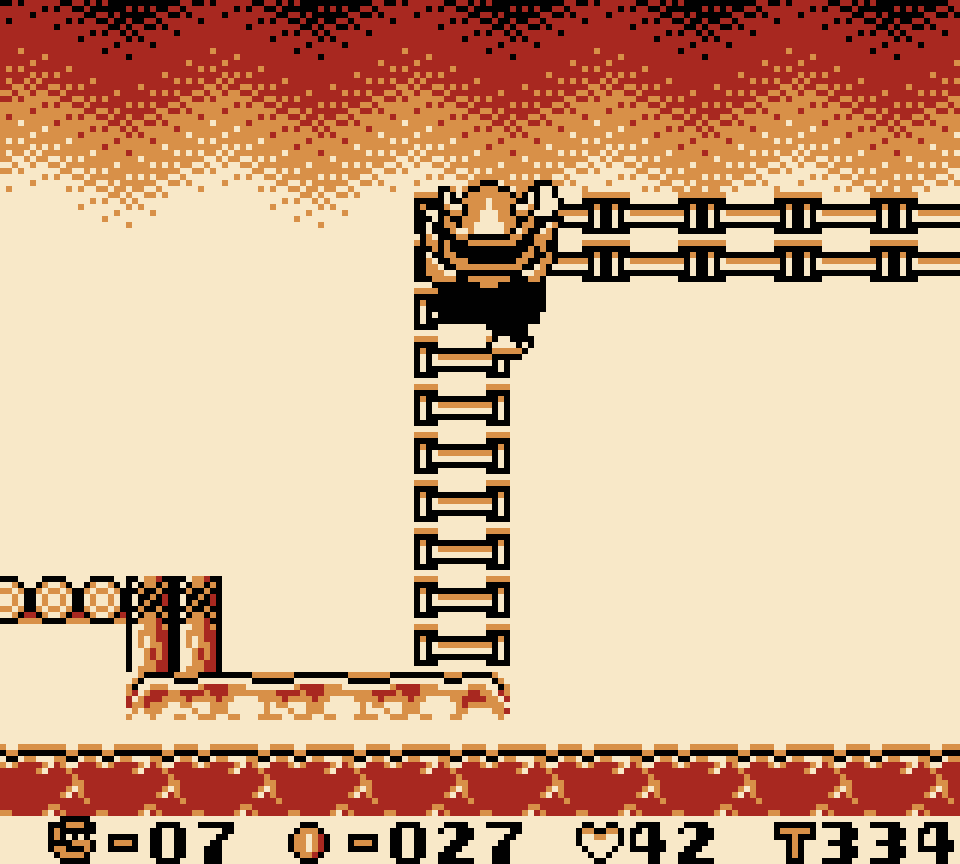
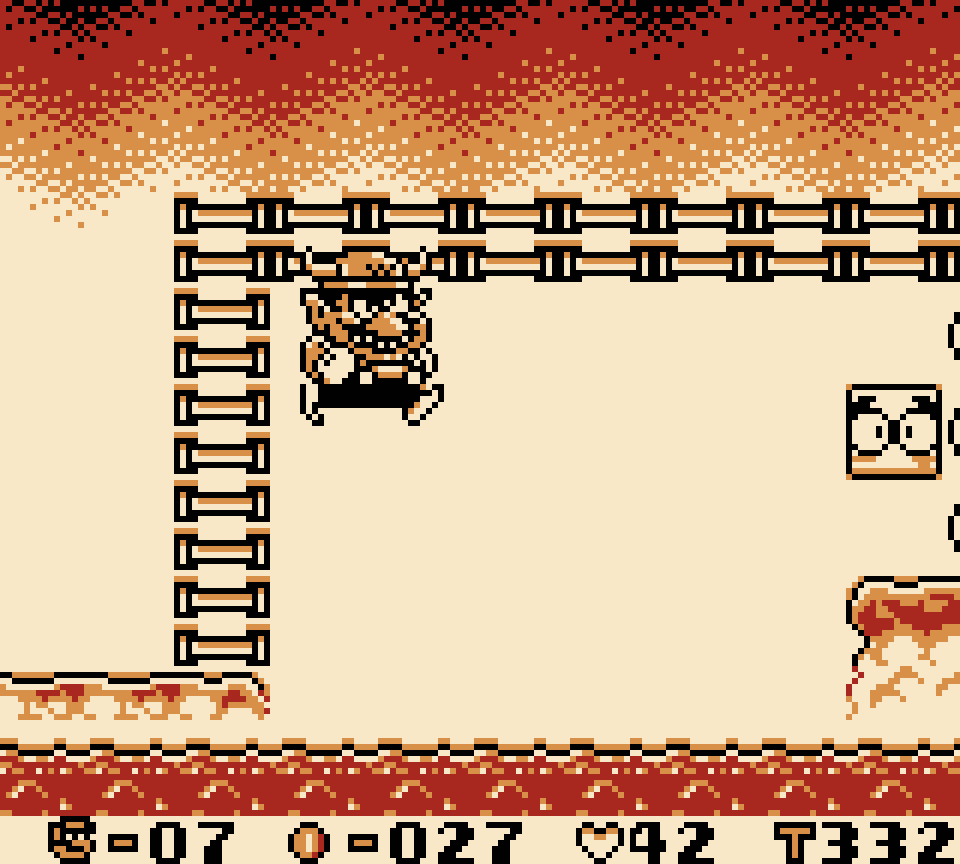
To make these sections e’en mo’ irritating, they littered this section with Wario Land’s equivalent to Podoboos, Bō, who force you to wait e’ery so oft to make sure one doesn’t pop out without any warning right below you. In fact, they’re littered thruout the whole level, forcing you to stop when they pop up. Thankfully they’re a’least timed & positioned so that you can usually see them coming before they leap, but it still makes a level where you’re mostly just fighting the same lame boomerang-throwing D. D.’s on bridges e’en mo’ boring. With all the pointless or rare enemies this game has, ¿they couldn’t afford to add in a lava-specific enemy? ¿We just have pirate ducks chilling in the lava levels? They had no problem replacing the birds with devil bats, e’en tho they’re pretty much the same enemy.
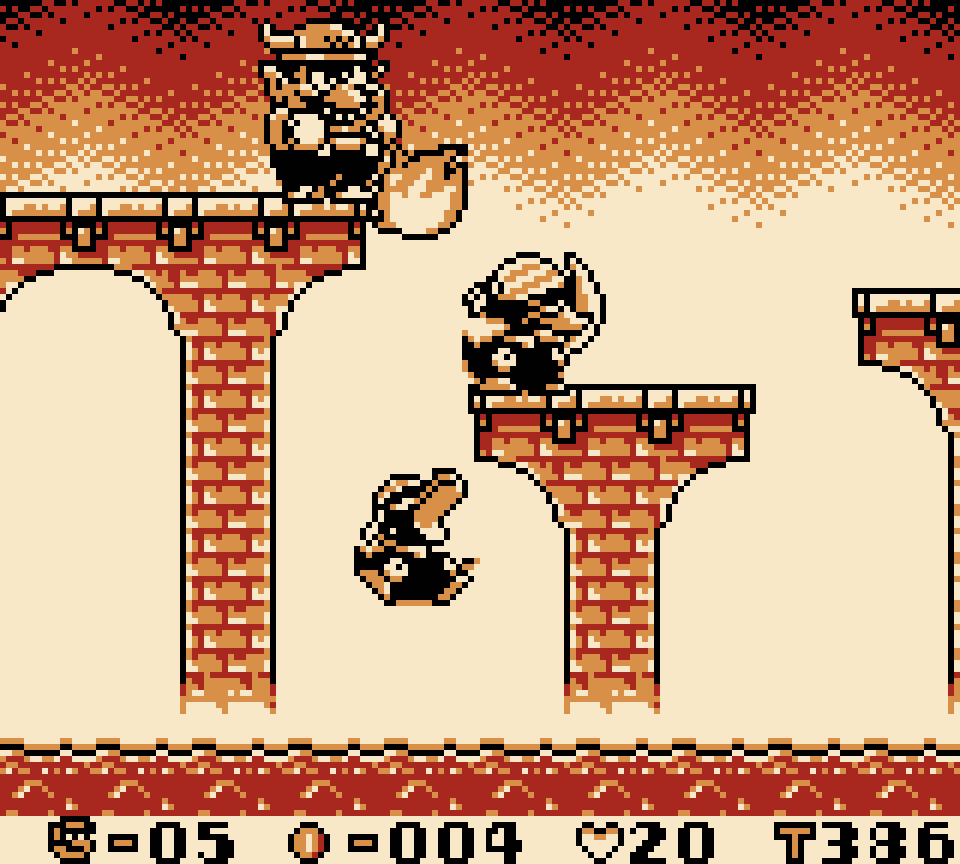
Speaking o’ which, this level ends with a section with birds, not Demon Bats, for reasons I can’t comprehend, since it has nothing to do with this level & doesn’t introduce anything new or interesting like other levels. It’s 1 thing to have a badly-implemented setpiece like the climbing sections; ¿you also had to neuter the climactic impact it’s s’posed to have by ending with such a tepid setpiece?
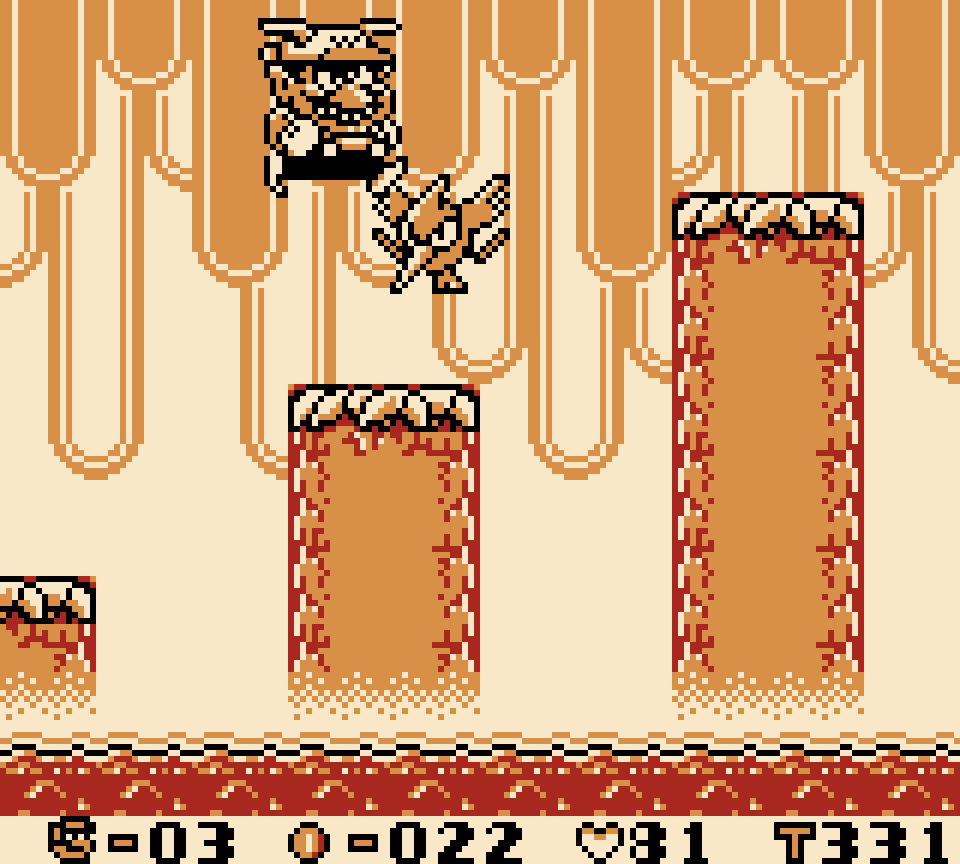
I also have to shout out a section near the middle where they have walls o’ blocks after a bridge with falling sections: if you’re regular big Wario & try to break thru the wall by attacking it twice you’re liable to get knocked back as the bridge pieces fall & fall in with them. ¡Those wacky developers! To be fair, by this point the developers already warned you ’bout falling bridge pieces, & this is an obvious trap.
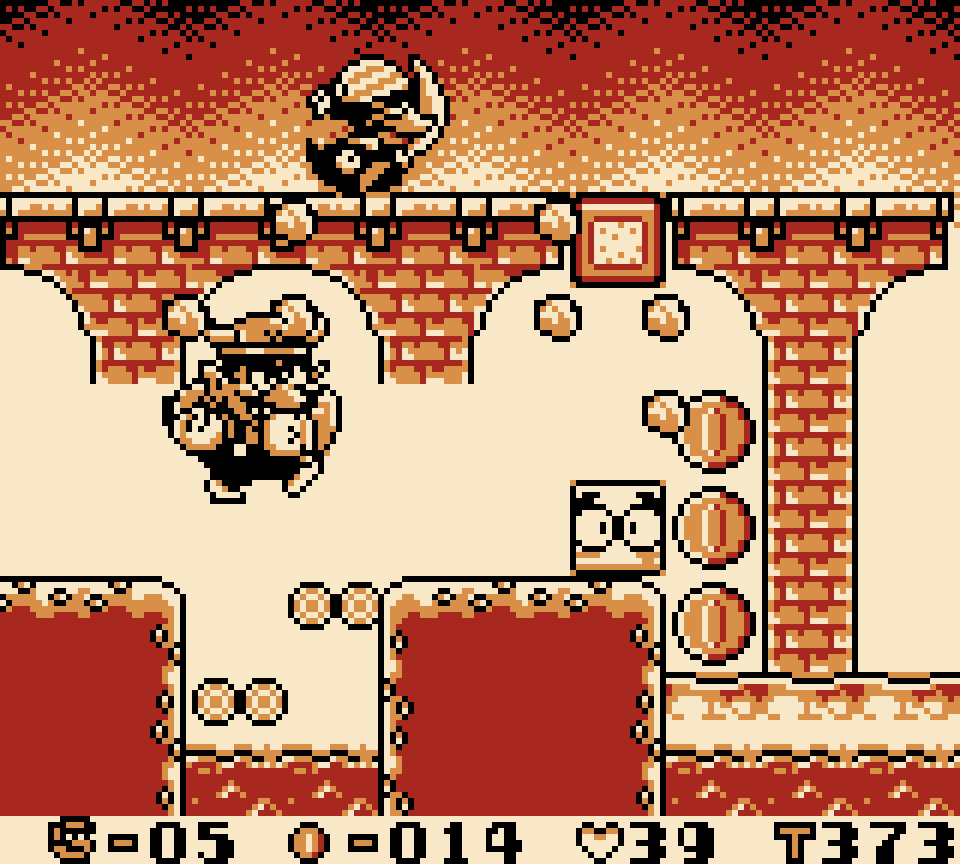
Course no. 22 is the worst level for 2 major reasons. 1, it copies many elements found in other levels nearby, making it feel redundant & repetitive. Obviously, its brethren share the same sin, & we will get to them soon, but course no. 22 is, thanks to the brokenness o’ the climbing sections, the worst implementation. But the arguably worse flaw is that this level is nothing mo’ than a crappily-made traditional Mario level. ¿Isn’t the whole point o’ Wario Land that it’s s’posed to subvert Mario games? ¿Why am I making basic jumps round Podoboos going under a bad alias?
39. Course No. 31
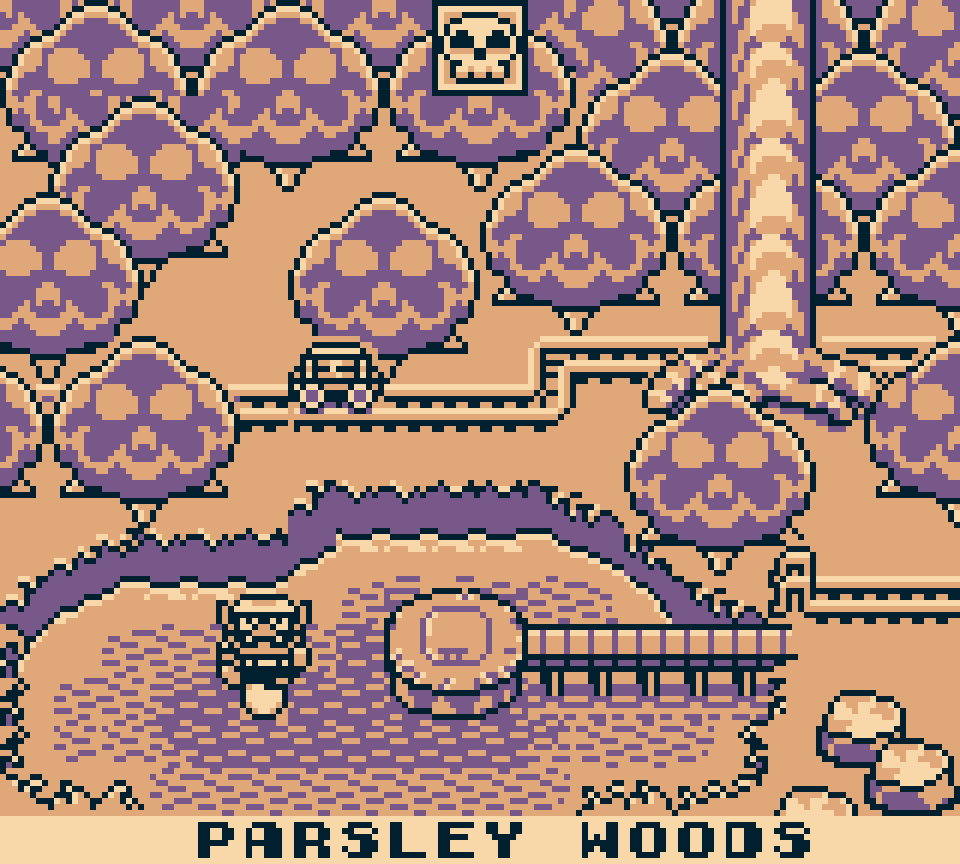
This level repeats the gimmick that 2 levels in “Rice Beach” did, but flipped, having ’nother level drain this level o’ its water. But whereas those levels changed when they became flooded, this level essentially becomes a completely different level when drained o’ its water, with its rolling spike balls inexplicably replaced by spike-throwing moles, & the focus on the bottom ground area, which was, also inexplicably, not present @ all when flooded, leaving the 1st version o’ this level vertically shorter.
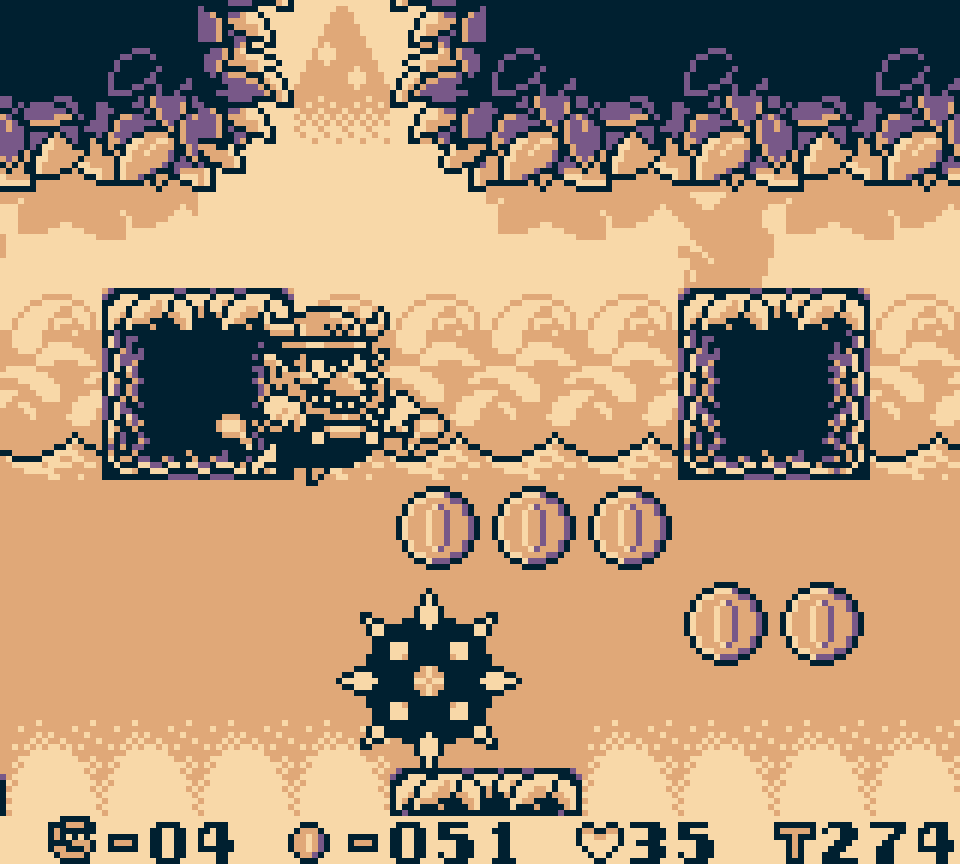
This could be considered clever, but can’t save the fact that both versions o’ this level are unbearably repetitive, time-wasting, & o’erall tedious. The 1st version is the most repetitive level in this entire game, & worse, its repetitive “challenge” is nothing: you just wait for the spike balls to drop, roll down into the water, & then continue. I’m not kidding: the challenge o’ this level is waiting for dangers to drop in & then leave before continuing. & this level is quite long, too: there are 16 spike balls you have to wait before.
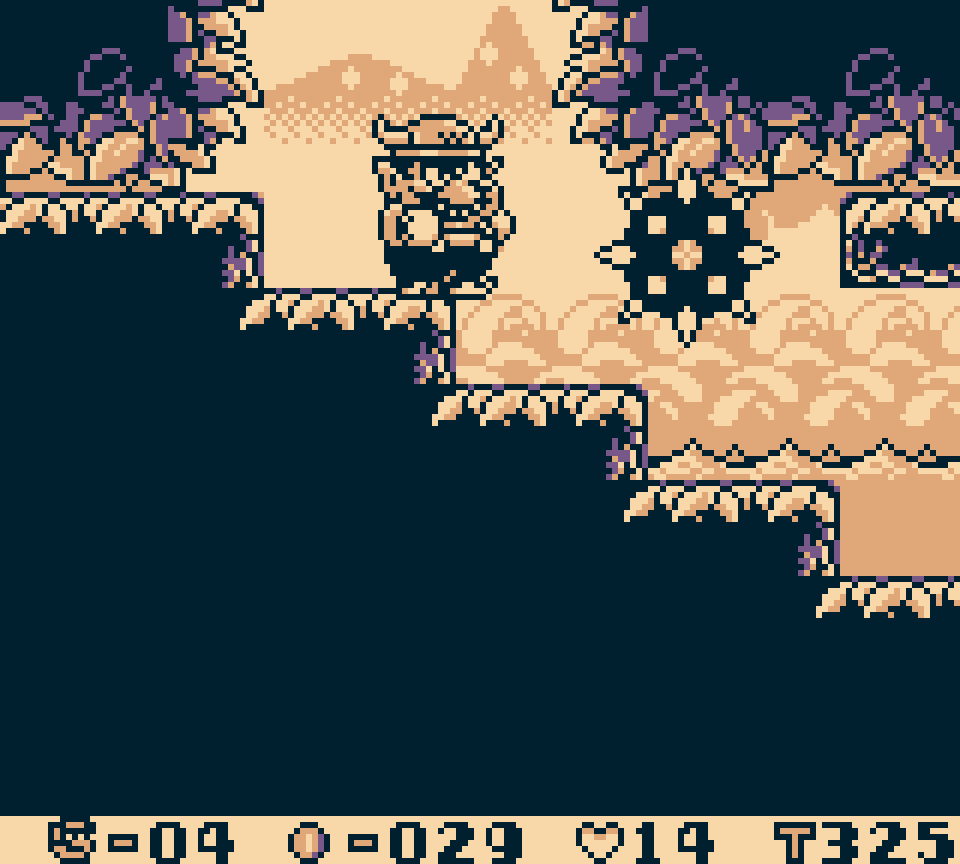
& if that wasn’t ’nough, this level’s “music” is a 4-second loop o’ a twinkle noise & a few mystical notes, repeated ad nauseam.
This level’s only challenge is a gotcha right @ the end, where they have a pointless 1-block gap. Anyone halfway curious is going to go down there to see if there’s a secret passage, only to find that if they let Wario’s feet so much as graze the bottom, they die instantly — from being poisoned by the bottomless pit, I s’pose. What makes this e’en dumber is that in the drained version o’ this level, there is something down there. ¿So I guess draining the lakes also magically filled bottomless pits with dirt? ¿Why not just have an empty chamber down there? That would be better, as it’d make the player curious, only to remember that suspiciously empty room when returning after draining the lakes.
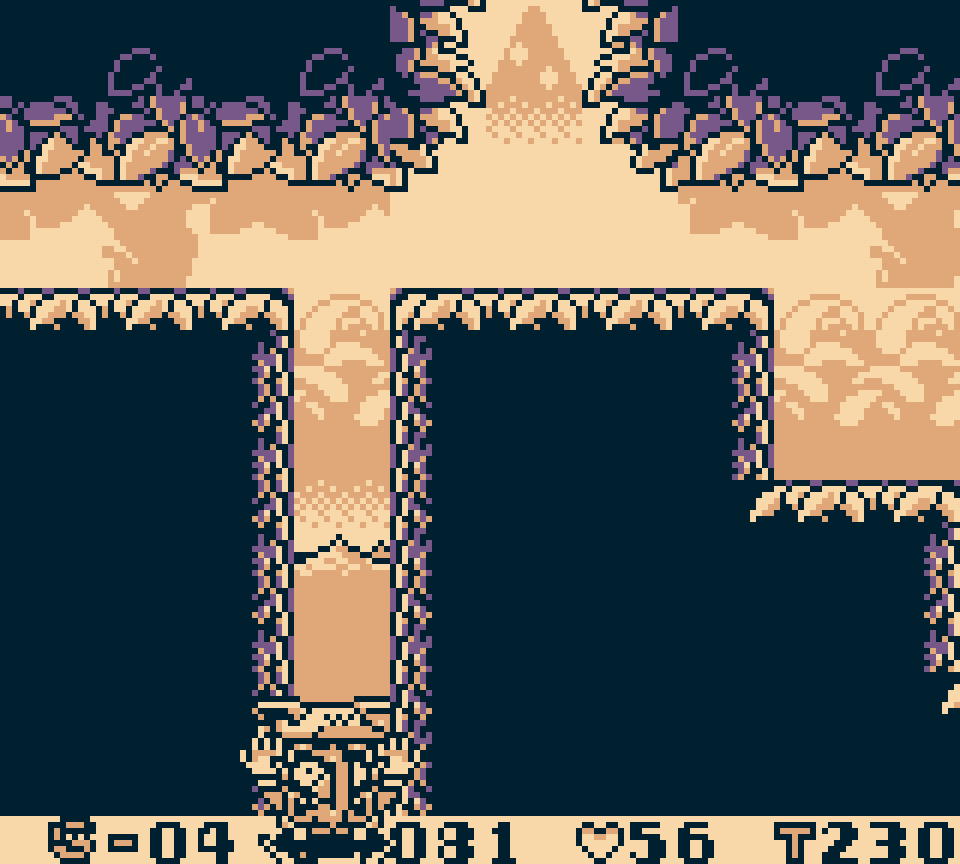
Anyway, the return trip just fills its path with a bunch o’ block walls whose only purpose would seem to be to make carrying to key from the beginning to the end mo’ tedious, ’cept to make this level possible with small Wario, they also put ladders you can climb to get round them, so they are completely pointless in a different way.
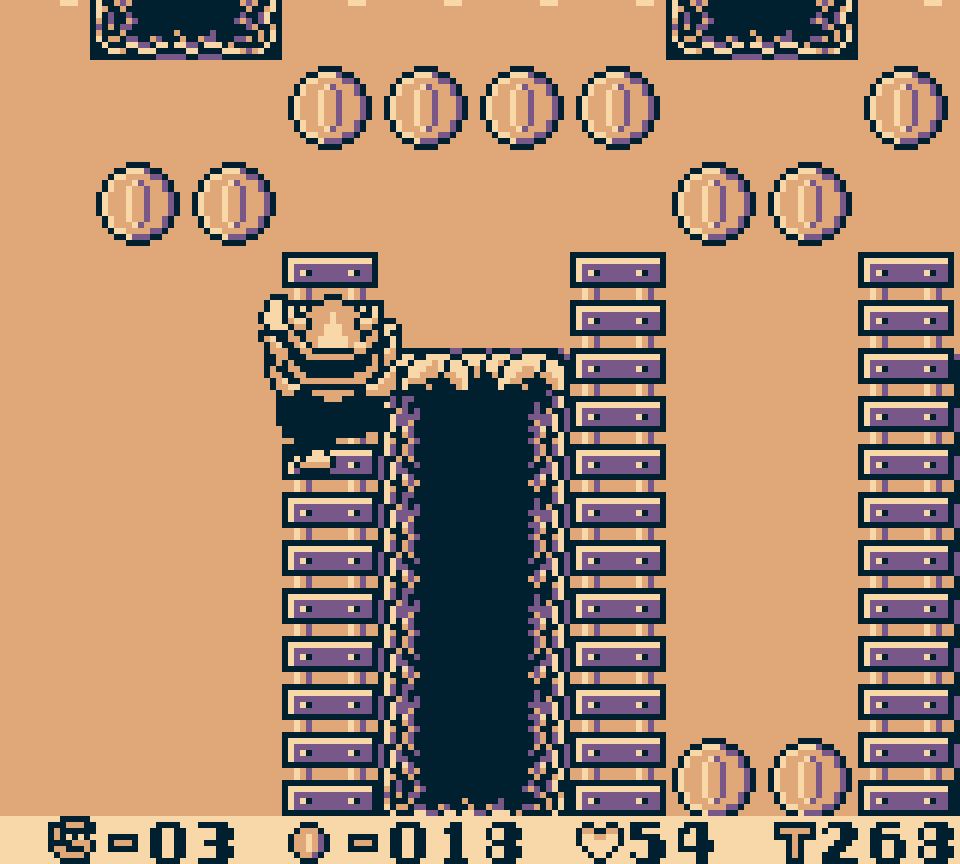
They also fill the area with spike-throwing moles, who oft have low ceilings o’er them, making them nearly impossible to get past if you don’t have the dragon powerup @ 1 point, but, blessedly, they give you a star @ 1 point so you can just plow thru them.
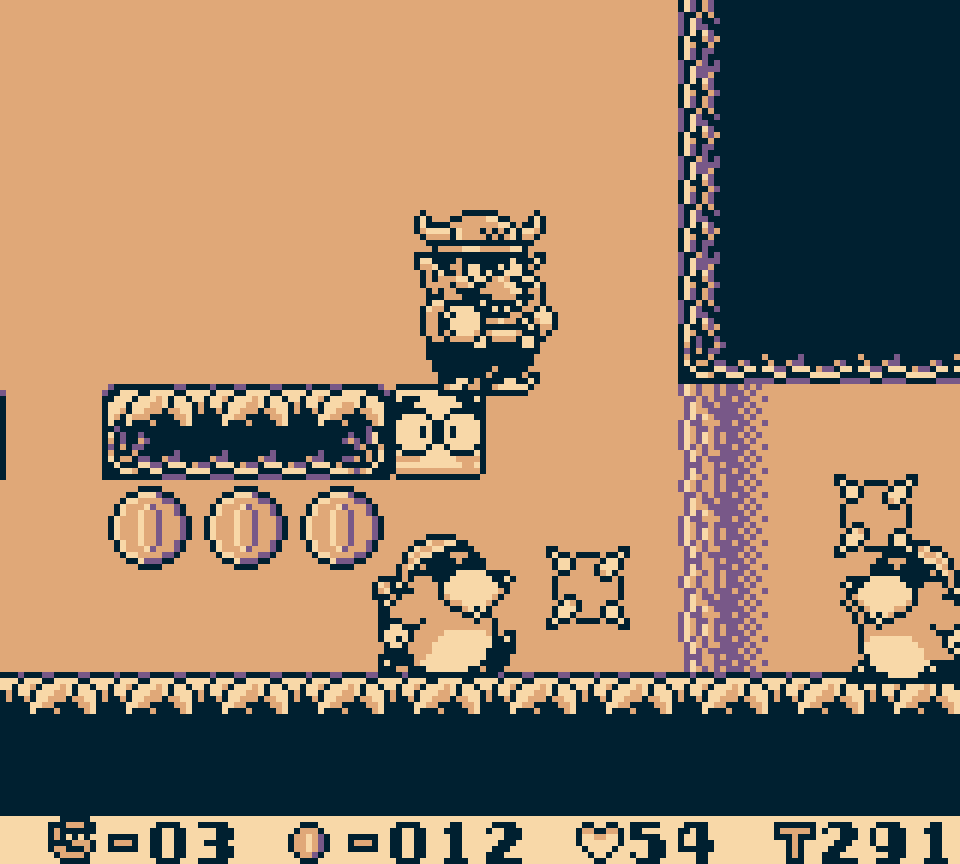
The return trip doesn’t e’en use the level’s terrain well: there’s 1 part where you’re climbing up steps & there’s nothing there. ¿Why did they remove the rolling spike balls? I mean, they were boring, so I’m kind o’ glad they’re gone, but it just leaves this section feeling comically pointless.
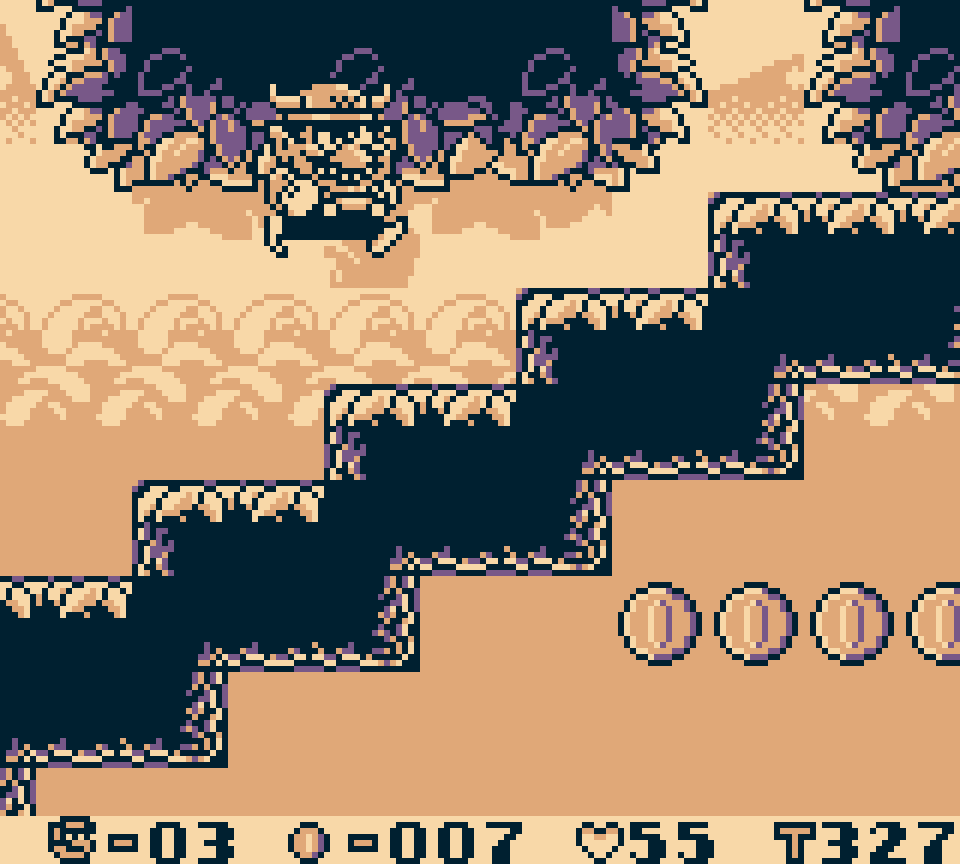
O, & as a bonus, as a jape they have an area with an item block where it seems like you can safely go down, but there’s a muncher trap down there. ¡Those wacky developers!
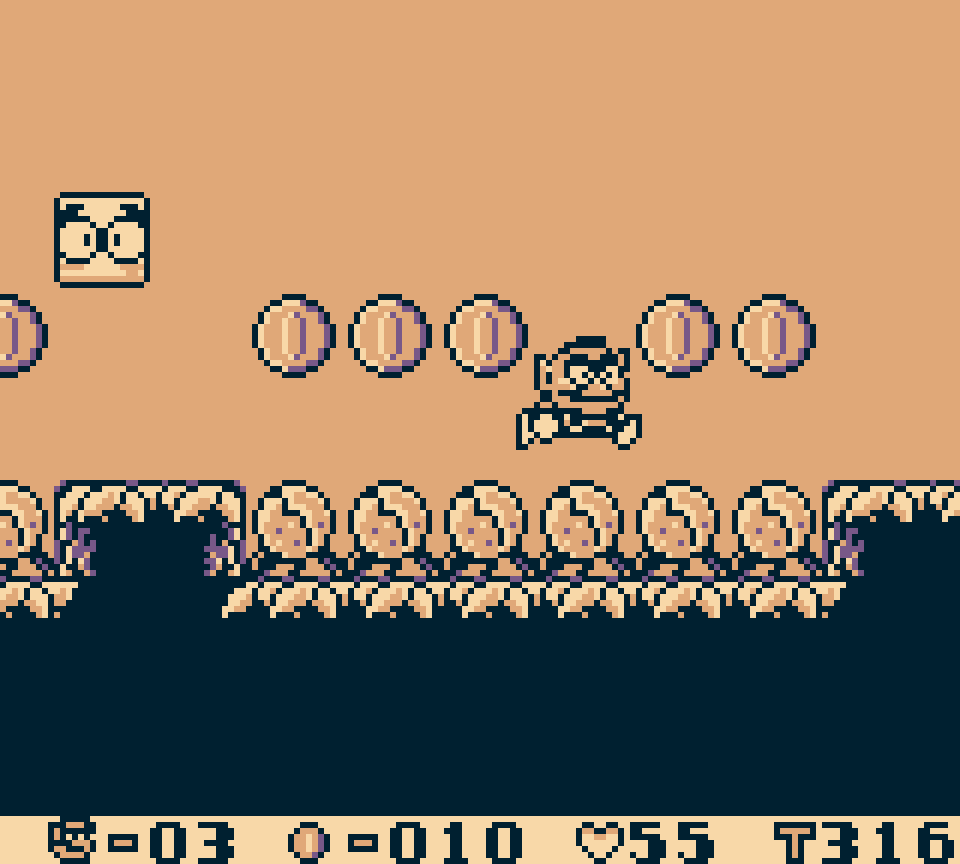
It may seem like this level should be worse than course no. 22, & ’twas a close 1, specially considering they make you play it twice e’en if you do well, but I give this level credit for a’least trying to add a twist, while 22 was just basic & badly implemented.
38. Course No. 35
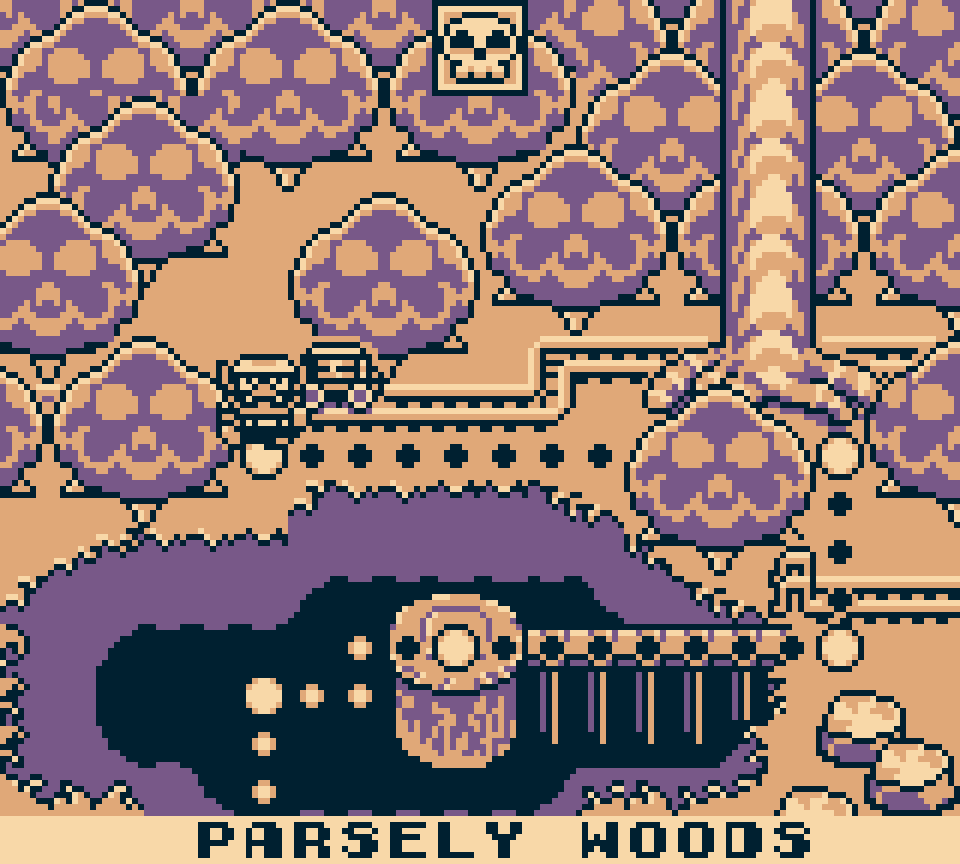
This is a comically redundant level: basically course no. 33, but longer & dumbed down, despite coming after that level, & not long ’nough for players to have time to miss it. You have a bunch o’ basic rooms with basic enemies, some o’ which are autoscrollers with some sections where you ride mine carts. There is like 1 section where you have to jump o’er blocks, including a wall o’ blocks that’s somewhat tall, that is maybe unique to this level — that’s the best part o’ this level.
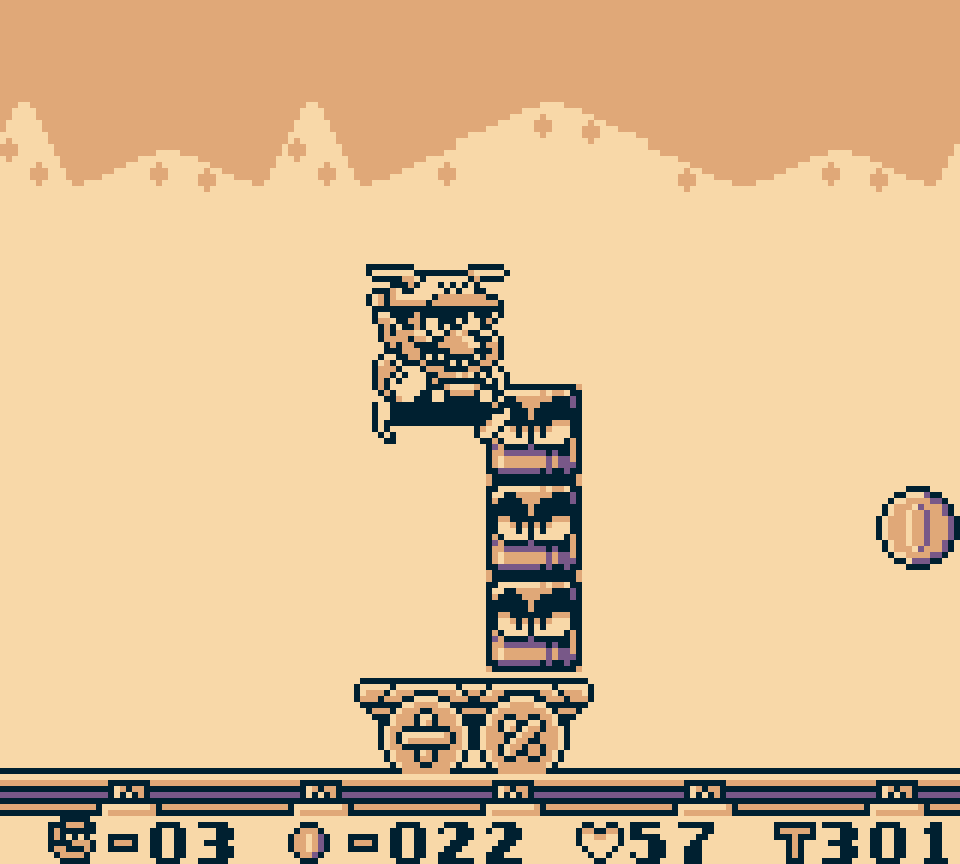
In contrast, this level has 2 rooms where you just have a bunch o’ boxes & basic Pirate Gooms walking back & forth ’tween them.
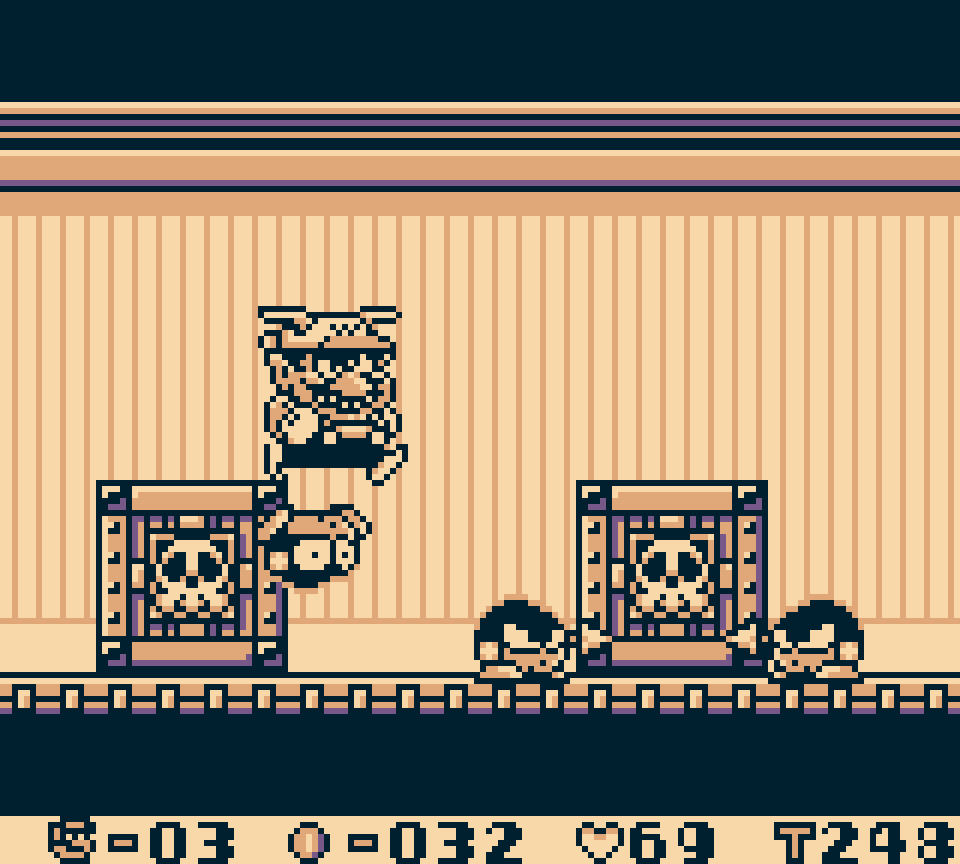
But probably the goofiest part is during 1 o’ the autoscroller sections where they put a bunch o’ solid blocks — in case a player’s dumb ’nough to try breaking thru all those before the screen scrolls past. Well, I was dumb ’nough just for thoroughness & there’s nothing ’hind them; they are completely useless.
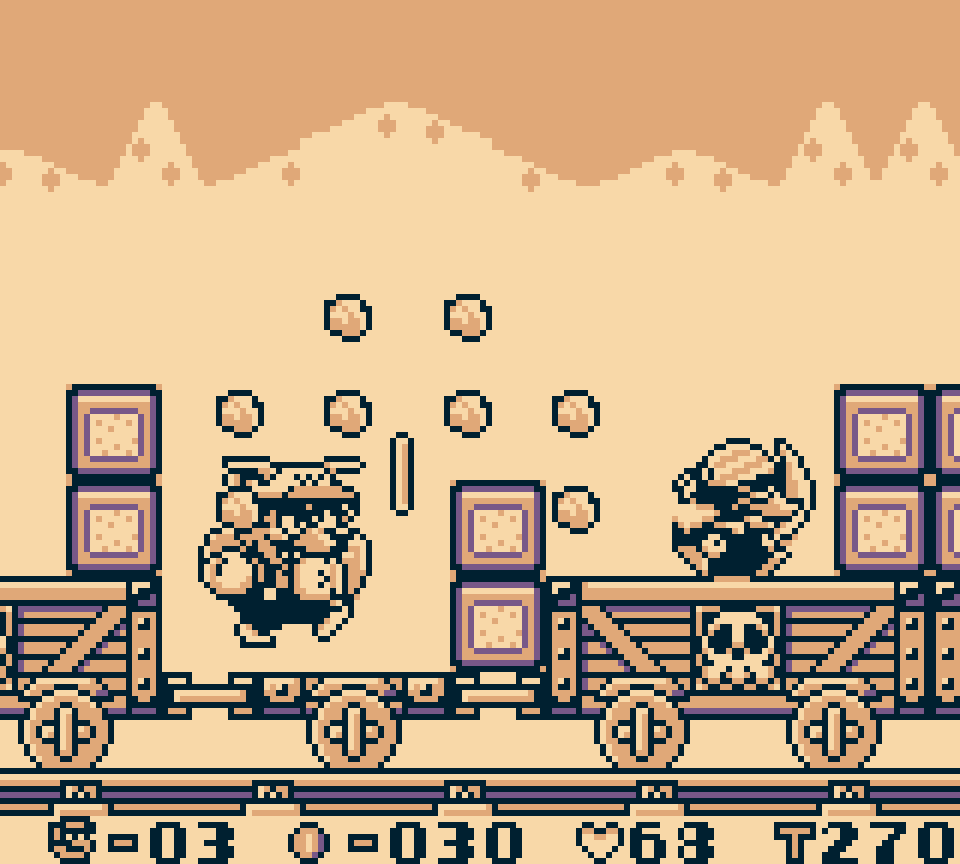
There’s also an awkward quirk to both this & course no. 33 where if you happen to step on a mine cart while on the edge o’ the screen, — in my case ’cause I’m trying to rush thru these boring levels as quickly as possible — then the mine cart will stay glued to the edge, not letting you see what’s in front o’ you. It’s not a huge problem, since this game’s so slow I still felt like I had plenty o’ time to react to this level’s 3 whole blocks in my way; but a mo’ polished game — or perhaps just a game less early on the Game Boy’s weak hardware — probably would’ve added custom code to make the camera eventually center on the mine cart.
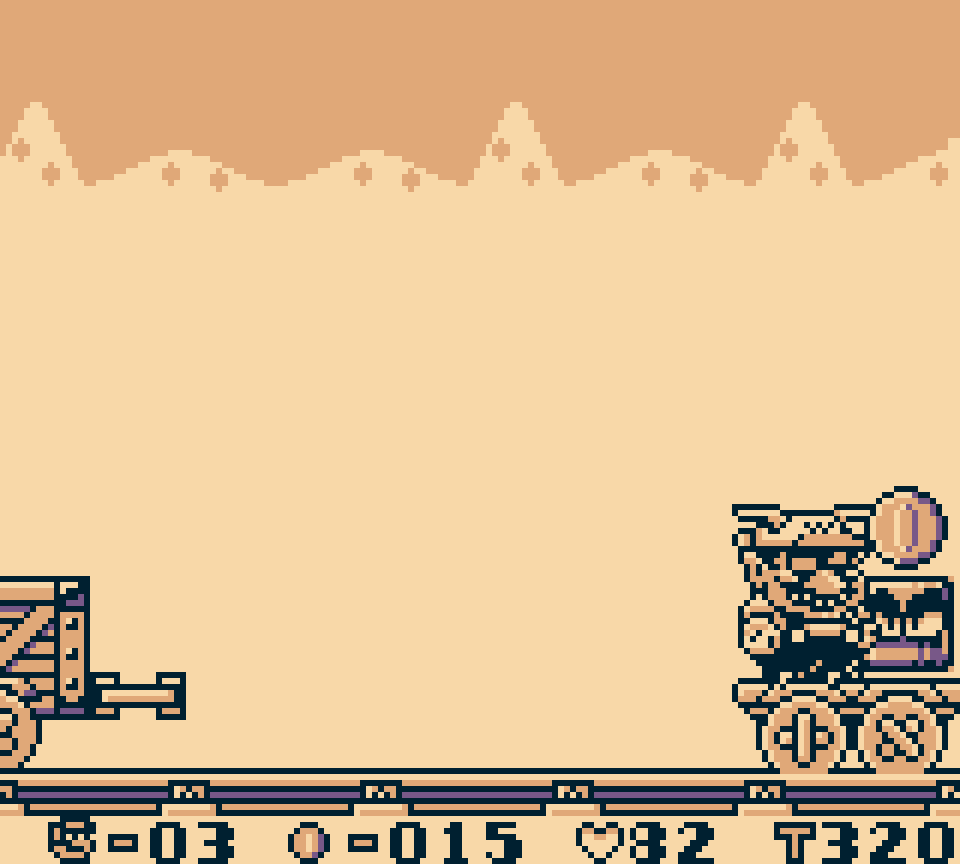
The only praise I can give this level is that it’s nice looking, especially with the cool effect o’ the level shaking up e’ery once in a while to simulate the train bumping on the tracks. I’m not sure why they decided to give these train levels music that sounds like it belongs on a game show, but it’s funny & 1 o’ the catchier songs in this game, so I won’t complain.
37. Course No. 28
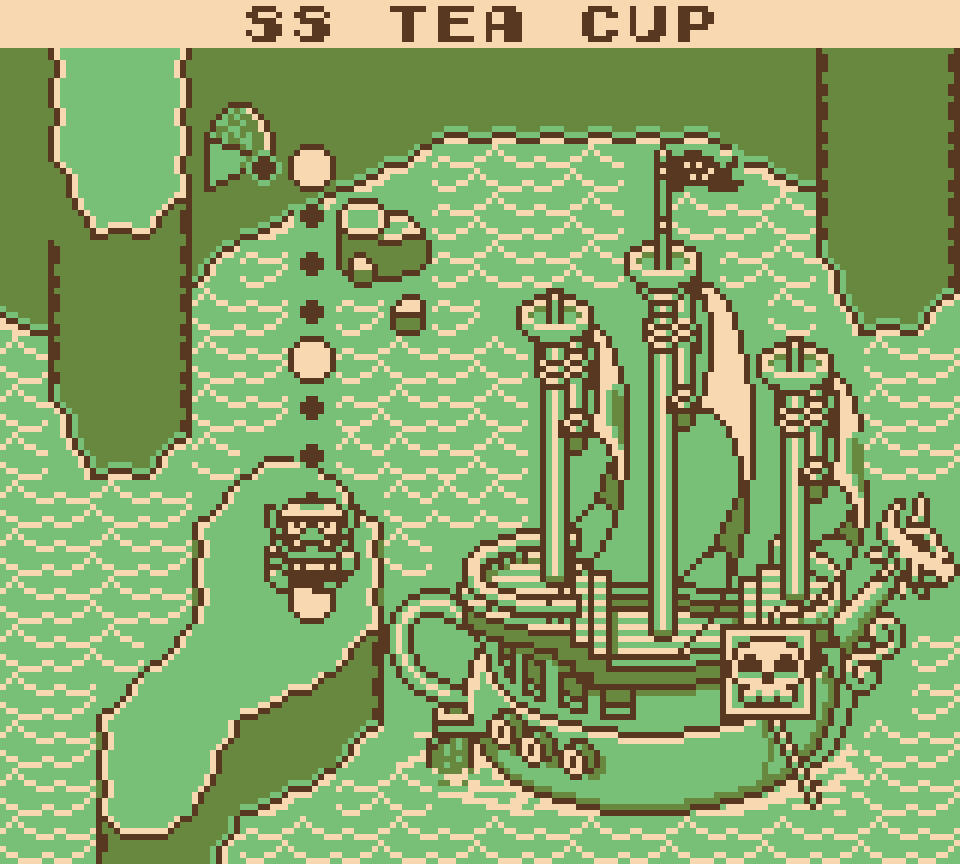
I hope you love jumping o’er birds, ’cause that’s what this level revolves round — despite so many other levels having plenty o’ bird-jumping, or having you jump o’er Demon Bats, which are just birds with a different appearance. & this level’s idea o’ switching things up is by splitting the beach & barrel sections where you jump o’er birds & Pirate Gooms with water sections where you just jump o’er birds.

Actually, this level has 1 other twist: before the 1st water section there’s a door in plain sight with a switch; if you hit this switch you reveal a ladder up to a sky section where you can collect coins while jumping o’er birds, as opposed to the regular route, which has you collect coins while jumping o’er birds. ¿What’s the point o’ this switch & alternate path? ¿Is it a joke on the player? I think you can get a few mo’ coins if you take the upper path, but the upper path is slightly harder ’cause you can fall down the holes ’tween the blocks… ¿but who cares? A few coins aren’t worth anything when Wario gambles them all & has a weight fall on his face, & if you made it this far in the game, I’m confident you can accomplish some basic jumps.
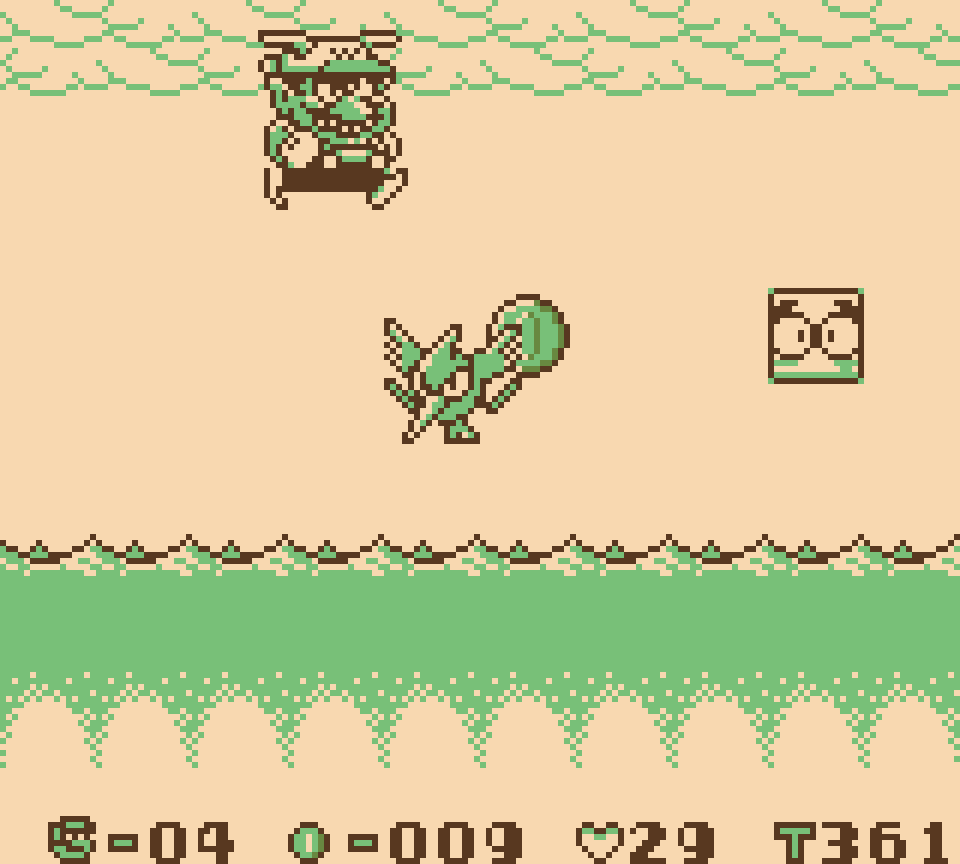
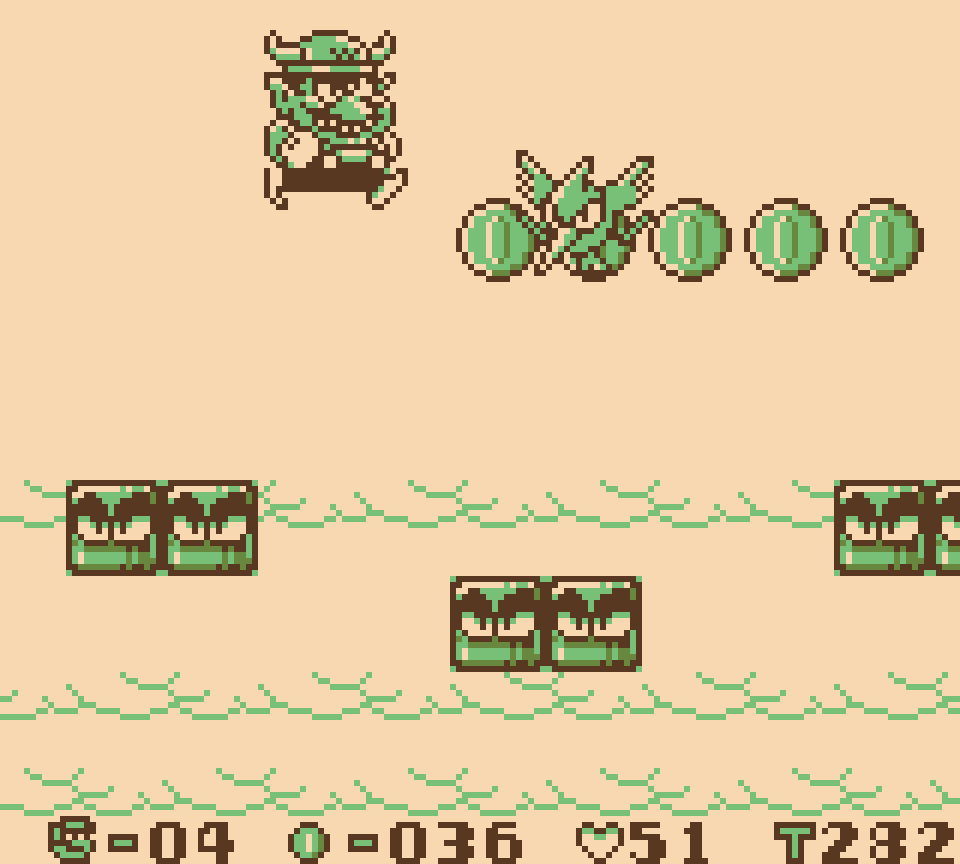
The water sections also have a bunch o’ cracked blocks. ¿What’s hidden ’hind them? Nothing. Going thru the trouble o’ breaking them gets you nothing & they serve no purpose.
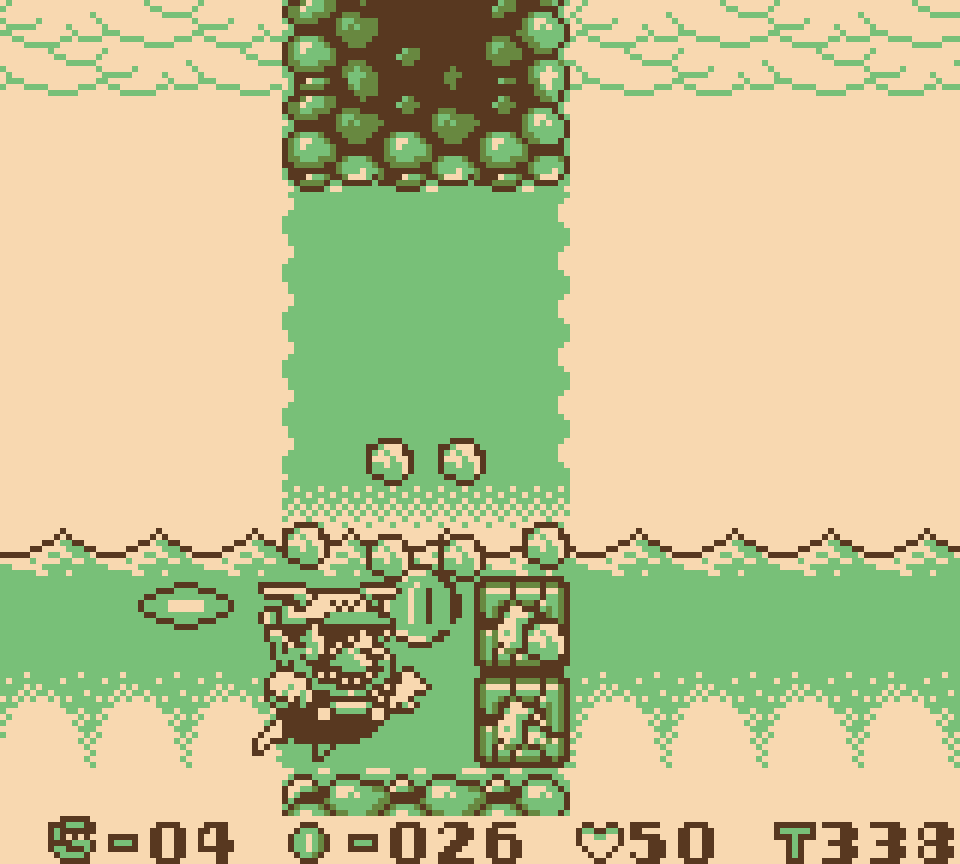
Anyway, this level ends the way many levels in this game end, by introducing an irrelevant mechanic used in a very basic way, which a’least gives us a much needed break from the birds. Unfortunately, this enemy, the seals with harpoons, were already introduced in course no. 17 — tho the few players who skipped that not-well-hidden bonus world will surely be excited by this basic enemy you can ignore by staying out o’ the water & staying on the long, wide platforms ’long the top.
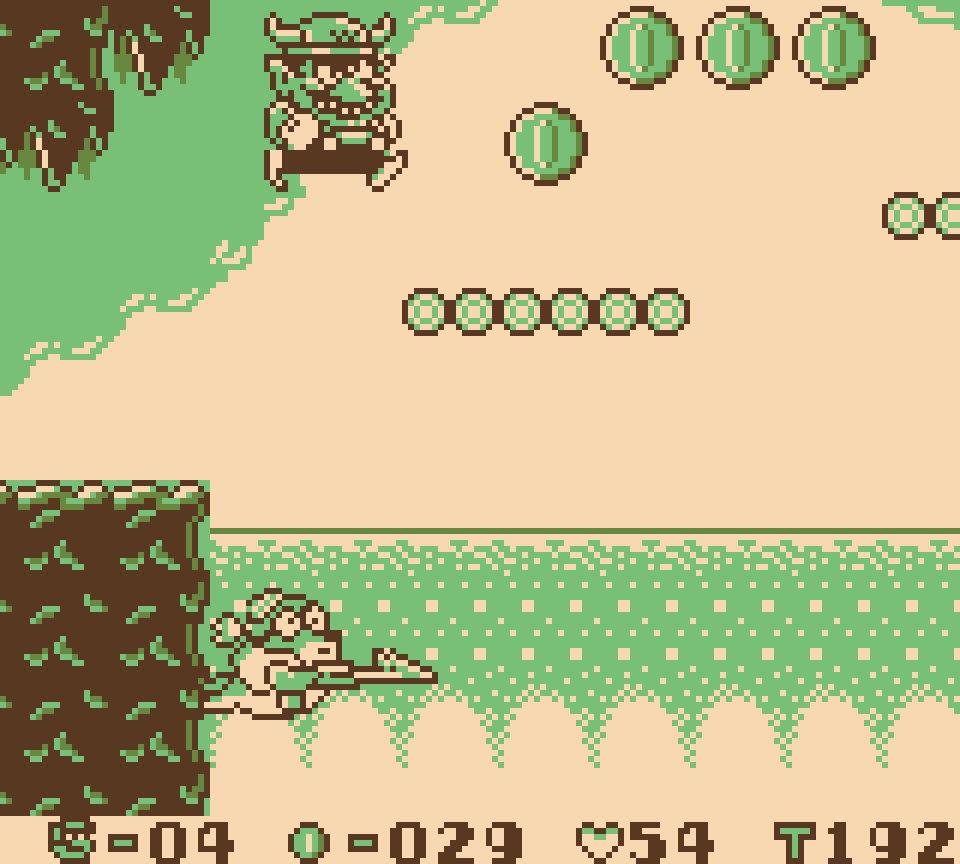
36. Course No. 37
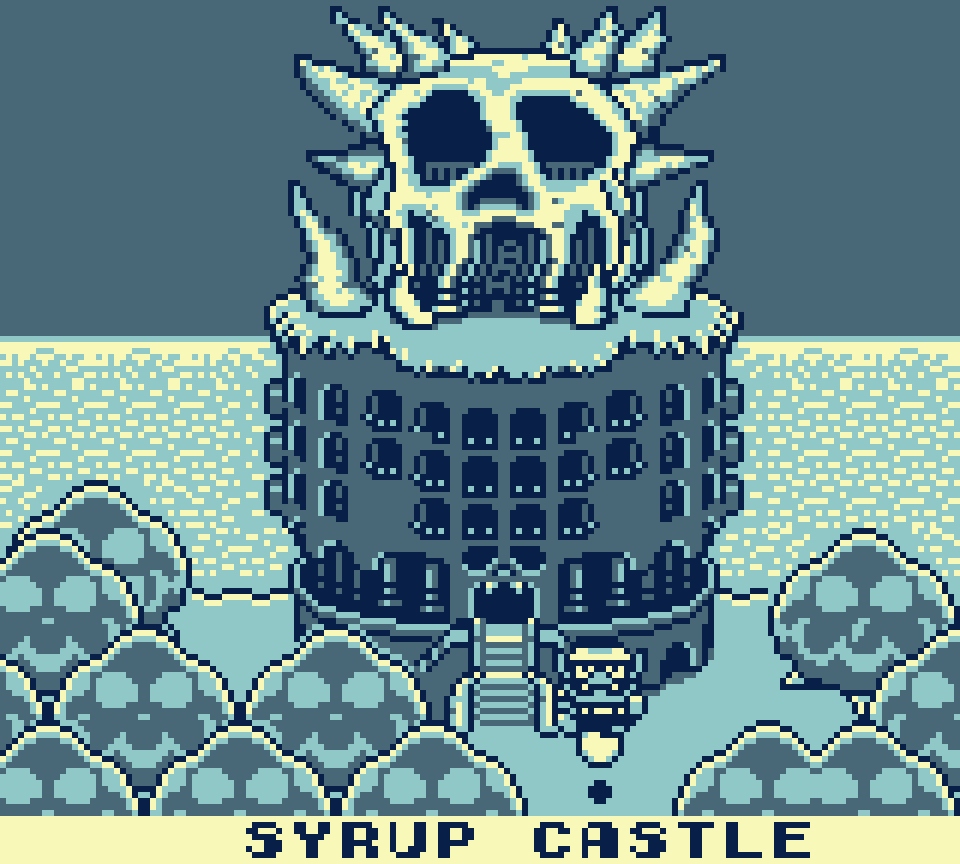
¿Remember the level we looked @ where you just wait for spike balls to roll out o’ your way 16 times? Well, in this level you can’t just wait for the spike balls to get out o’ your way: you have to jump o’er them. For the 1st half you have to keep alternating ’tween jumping o’er giant spike balls, Pirate Gooms, & muncher pits. That is the entire 1st half. & worst, this level, which opens the final world, comes just after a level that did a much better job o’ creating cleverer setpieces involving spike balls. I can see that they wanted to smoothly transition from the forest world to the castle world; but that shouldn’t mean just making an inferior copy o’ a level from the forest world.
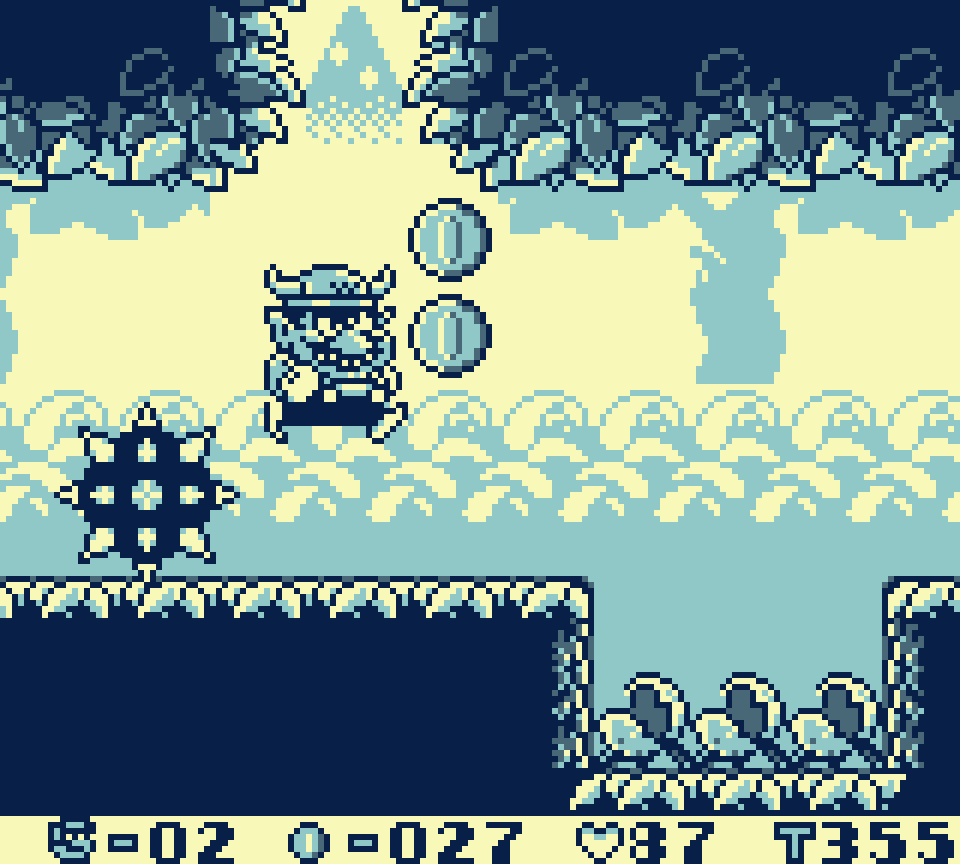
The 2nd half is a bit mo’ clever, tho you can still just wait around for many o’ the spike balls to just get out o’ your way. Contrariwise, there’s 1 spike ball that just falls on top o’ you as you’re landing from a jump onto a platform, with no way to get out o’ the way once you jump into its path.
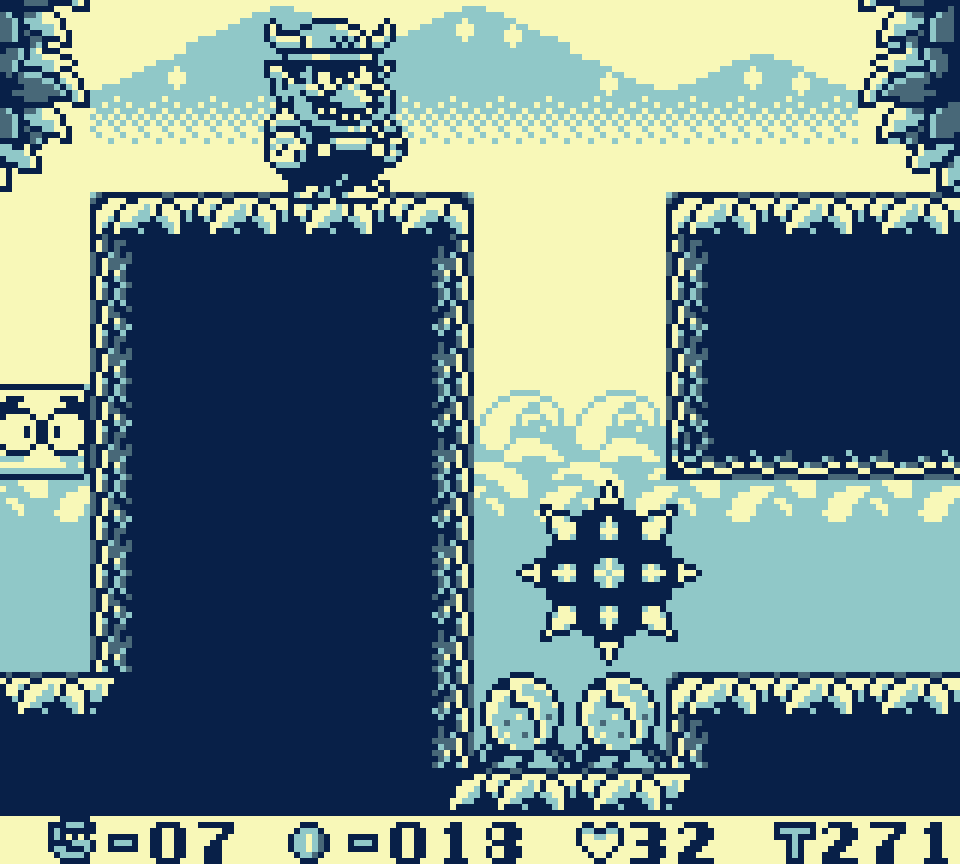
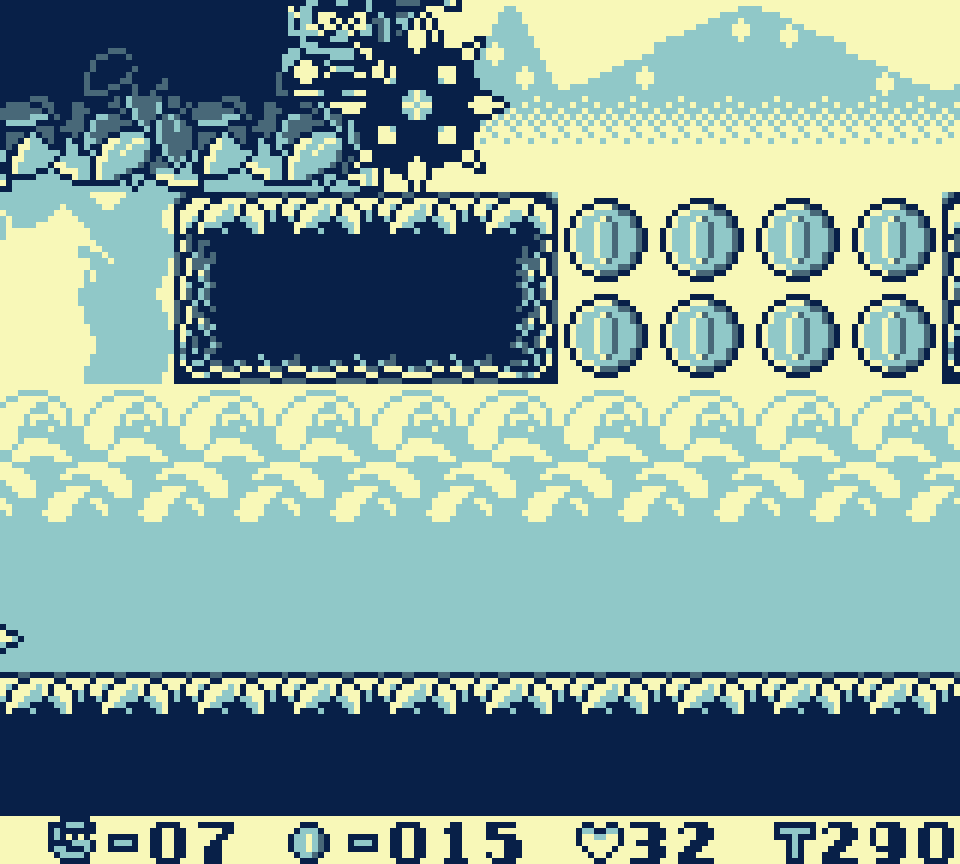
& then you have the pitiful treasure, where the key is in an item block in plain sight & the path to the chest is right next to it, gotten by walking thru the obvious walkthru wall with the awkward-looking floor going thru it. I guess it’s better than it being completely obscure, & better than having to run all around with the key or have to backtrack.
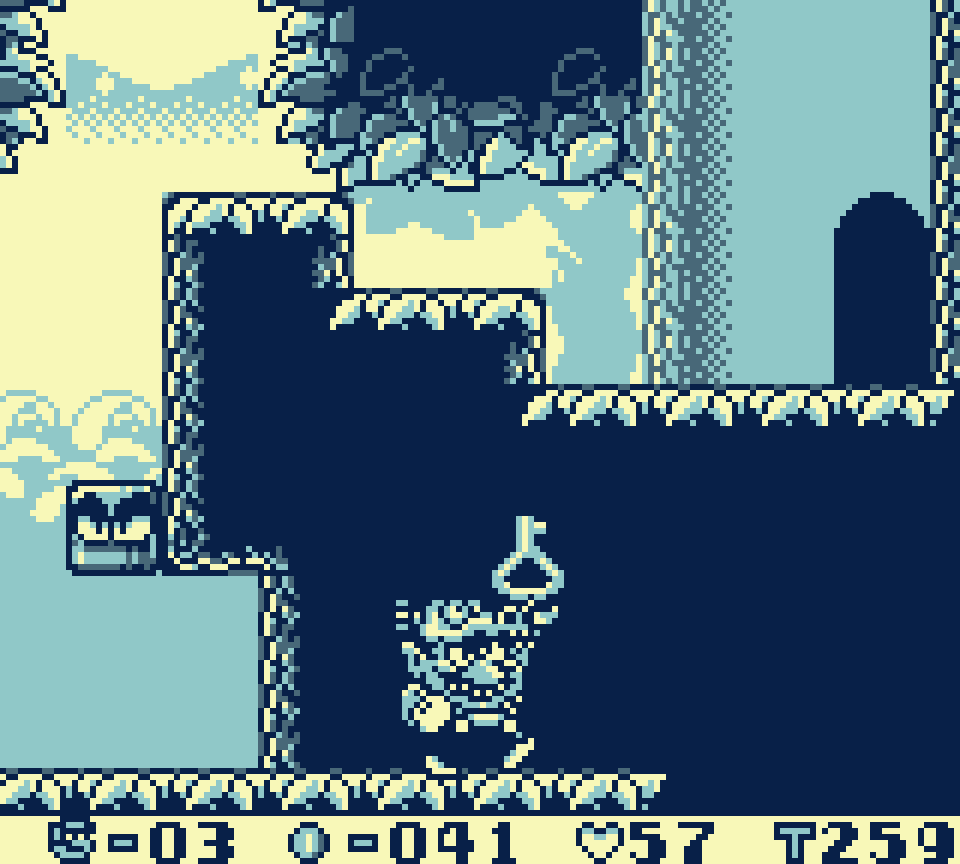
The final room introduces the final world proper, as well as the fireball-shooting statue heads, implemented in a relatively safe way where they just sail o’er your head, which, weirdly, is safer than mechanics introduced much earlier in the game. As you will see, this game ends quite a few levels by introducing new mechanics in safer ways, as well as transitioning from 1 theme to another, which is an interesting idea. This level’s use is neither the worst nor the best use o’ this effect.
